Page Contents:
- Dedworth through the ages
- The first Church building – 1863 to 1971
- Pictures of the first church
- The second Church building – 1972 to 2000
- All Saints in the 21st Century
- William Morris and All Saints’ Dedworth
- Details of the stained glass windows
- The Vicars that have served at All Saints
- The Dedworth War Memorial
Dedworth through the ages.
It is thought that Clewer and Dedworth were originally Saxon villages. They are certainly listed as manors in the Domesday Book of 1086, under the Saxon names of Clivore and Dideorde, when the populations are estimated to have been about 60 and 20
respectively. Both manors were in the Berkshire Hundred of Ripplesmere.
Following the Norman Conquest in 1066, the ownership of Clivore had passed from Harold, Earl of Wessex to Ralf, son of Siegfried, whilst Dideorde had passed from Hugh the Chamberlain to Albert of Lotharingia.
About 1070, the high ground of Clivore was taken for the building of Windsor castle. For many centuries the Crown paid rent to the manor of Clewer.
None of the pre – 12th century buildings of Dedworth or Clewer have survived, but at about the year 1100, the nave of St. Andrew’s Church in Clewer was built.
Mill House at the end of Mill Lane in Clewer marks the site where a mill stood for over 800 years. It is thought that there was probably a river landing point and a ferry crossing of the Thames nearby.
Did you know that many of the roads between Ruddlesway and Smiths Lane are named after 16th century Windsor Mayors? One of the best remembered, three times mayor Richard Gallys, was landlord of the Garter Inn, immortalised in ‘The Merry Wives of
Windsor’. Testwood Road and Pierson Road are named after two of the Windsor Martyrs.
In1543, in the reign of of Henry VIII, Anthony Pierson, Robert Testwood and Henry Filmer were found guilty of heresy and burned at the stake below the Castle. Robert Testwood was a member of St. George’s Chapel choir and Anthony Pierson was a
preacher in Windsor. Their associate John Marbeck, organist at St. George’s Chapel, was pardoned and lived to tell their story. His name lives on in Marbeck Close.
Source : The Streets of Windsor and Eton, produced by Windsor Local History Publications Group.
By the mid-1800s Dedworth was still a small settlement set 2 miles west of the growing town of Windsor. A map of 1856 shows that the major road pattern we have today was in place with Maidenhead Road and Dedworth Road linked by Roses Lane and Smiths Lane. Clewer Hill Road linked Dedworth Green to Clewer Green. Wolf Lane was a track that ran up the hill to the St Leonard’s Mansion (which is now the site of Legoland). There were a few houses stretched along the Dedworth Road at Dedworth Green plus a few larger properties but essentially Dedworth was an area of fields and farms on the lower land with forest up on St Leonard’s Hill.
When the decision to build All Saints Church was taken in 1861 the site was a field at the junction of Dedworth Road and Clewer Hill Road. The houses in Church Terrace were built in 1888.
For a look at an interesting map of Dedworth from 1881 try this website: http://www.old-maps.co.uk. Note: Search in the top left box for Dedworth.
Dedworth, as we know it today, developed westwards from Clewer starting in the 1930s and 40s with housing at Dedworth Drive and St Andrews Crescent. In the l950s with the housing at Perrycroft, Priors Road and the ‘prefabs’ at Foster Avenue (replaced in the early 1970s). In the 1960s the ‘Laing’ estate (to the west of Smiths Lane) provided nearly one thousand houses and flats that extend over a large area which had mostly been fields and open countryside. Three roads on this estate were named after Protestant Martyrs, Robert Testwood, Henry Filmer and Anthony Pierson, burned at Windsor Castle in 1544. A development on fields and woodland in the late 1960s and early 1970s provided housing in the White Horse Road and Hemwood Road areas. Also in the 1970s the Broom Farm army estate was developed. Since this time little new housing has been built in Dedworth.
In 1993 the Rogers Garage site in the Dedworth Road was cleared and the Tesco store was opened. This had a dramatic effect on the smaller businesses in the area with the closure of several small supermarkets and shops (eg. Bakers, Greengrocers). The shopping parade at Ruddlesway did not recover from the arrival of Tescos and after being
left unused for many years, a new housing development was built in 2015/6 on the site of these shops and their car park.
There are three other church buildings in Dedworth. St Marks, the Catholic Church in Dedworth Road, was built on the site of the old Dedworth Community Centre and the Baptist Church in Smiths Lane were both built in the 1960s. The Gospel Hall at the corner of Ruddlesway and Dedworth Road was opened in April 1996. The Baptist Church was badly damaged by fire in 2000 and eventually the building was replaced by the modern building of today.
The first Church building – 1863 to 1971
Following the death of Mary Sophia Tudor. a member of the Thynne family, her husband Henry and their children decided in 1861 to build a memorial to commemorate her life. They chose to build All Saints Church in a field near their home as a private chapel. The foundation stone was laid in 1862 and the red brick chapel was consecrated in 1863 by the Bishop of Oxford.

The family were patrons of the arts and they called in some of the Pre-Raphaelites to build and decorate the church. The Pre-Raphaelites were a movement that were reviving the literal and visual arts in England at that time. The family selected G.F.Bodley as the architect. He built other notable gothic churches but All Saints in Dedworth is the only example of his work to be found locally. William Morris, Edward Burne-Jones, Dante Gabriel Rossetti and Ford Madox-Brown, members of the pre-Raphaelite movement, produced the stained glass windows that made All Saints an important stopping place for visitors to Windsor.
The church was opened in 1866 and over the next 20 years the stained glass windows were gradually put in place. But as early as the 1920s the PCC (Parochial Church Council) minutes reveal that there were structural problems due to land slippage – a sign of problems to come.
Little is known about All Saints in these early days. Records from the early 1900s show that All Saints was well attended. For example the records for Christmas Day in 1911 show that the three Holy Communion services held at 6am, 7am and 8am had 96 communicants and there were also services for Matins’ at 11am and Carols at 3.30pm.

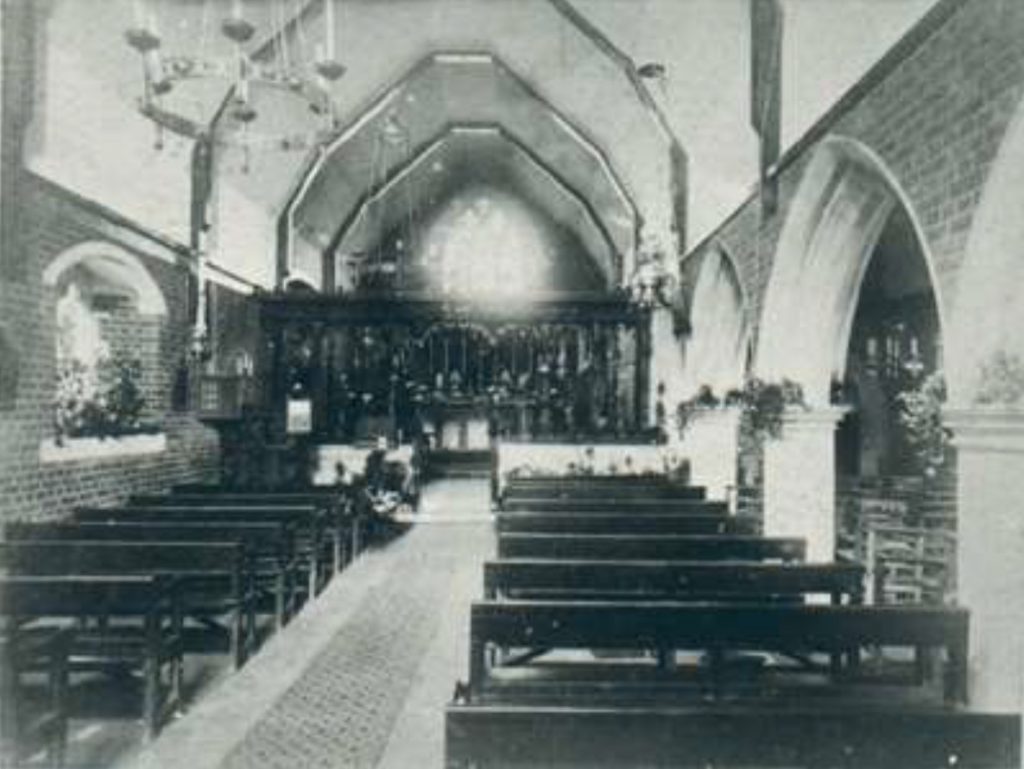
(for further pictures of the interior of the old church – see below)
From 1866 All Saints operated as a daughter church of St Andrews, Clewer and for the whole of the first half of the 20th century there was a new priest every 2-5 years. In 1950 Father Methuen started a 25 year period as Priest at All Saints. This time of his leadership saw a period of stability but also a dramatic change in the fortunes of the church building.
By the early 1960s it became clear that All Saints church was suffering from cracks caused by the movement of the Thames Valley clay on which the church is built. It is also possible that a nearby World War II doodle-bug explosion on July 1st 1944 which damaged houses locally in Kentons Lane may have added to the instability. In 1962 the brickwork was so cracked and deteriorated that it was decided that the church had to be closed to avoid injury to the congregation, and a new church building was needed.

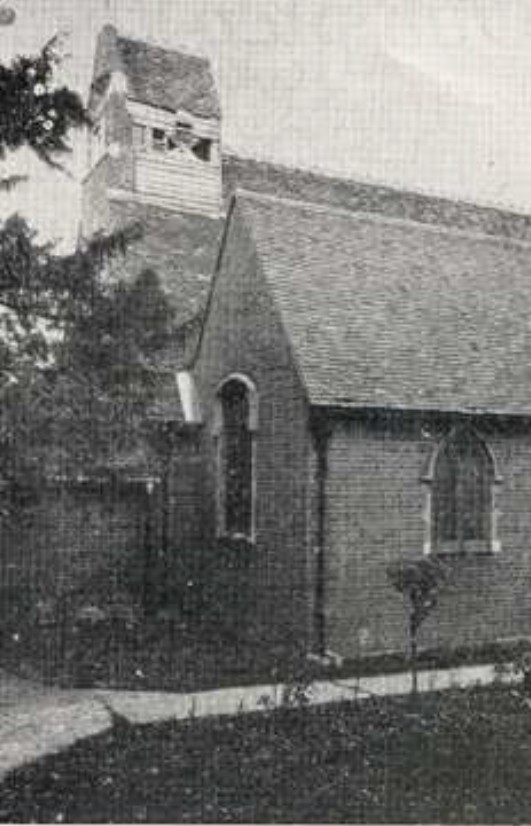
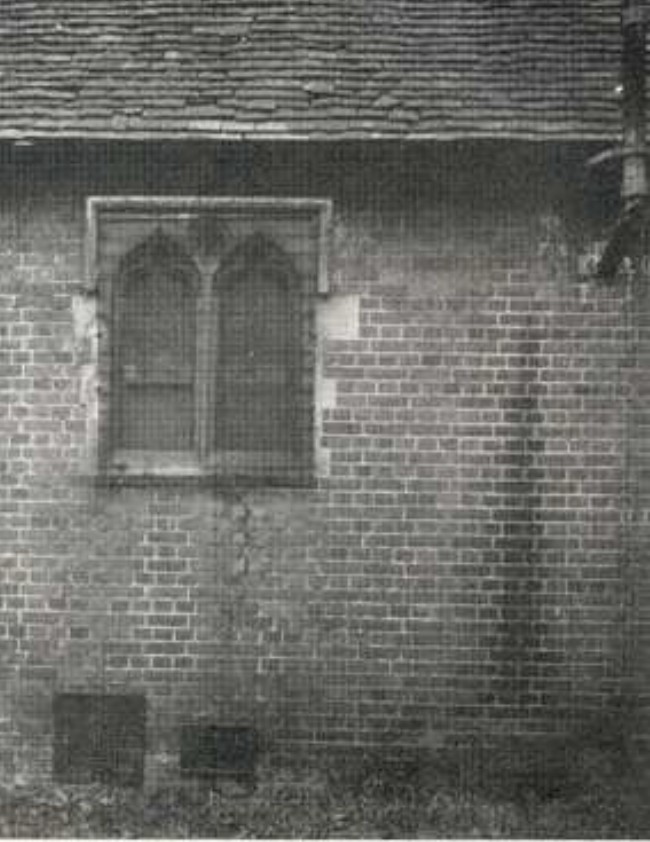
In December 1964, Architectural Review carried an item titled “Morris windows at Dedworth” which stated “The church has been declared unsafe and is to be demolished and replaced on the same site by a larger building. The windows have been removed and are at present in the care of the V&A”.
Church services were moved into the small ‘tin’ church hall which was situated beside the crumbling church building. Many experts were called in and opinion was divided as to the right step to take. Because of the great historical and architectural interest in the building many wanted to have the building restored. The congregation and friends collected 1300 signatures in support of restoring the building.
The debate continued through the late 1960s and in June 1970 it was decided to demolish the old building and rebuild on the same site. During this time the Parochial Church Council deliberated over what should become of the contents of the church, most notably the Morris windows. In the end the windows were moved to the premises of the Worshipful Company of Glaziers (Clayton and Bell in Aylesbury) for safe keeping. The Worshipful Company generously restored the windows free of charge before they were replaced in the new church. Other items from the old church were stored to be later reused in the new building.
In January 1971 demolition commenced and within a few weeks the site was cleared.
As a post script it should be noted that the first church is still a part of the present building in that a faithful member of the church for most of his life, Terry Skinner, painstakingly made a model of the first church building out of matchsticks. It is tremendously detailed inside and has interior lighting. Sister Gina made the altar cloth.

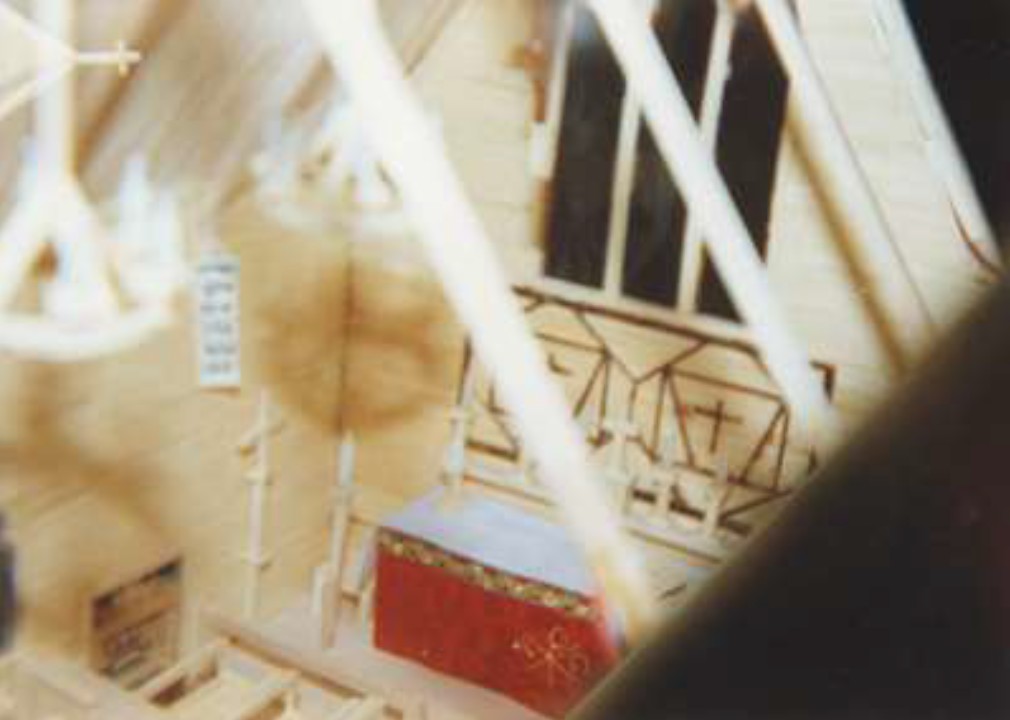
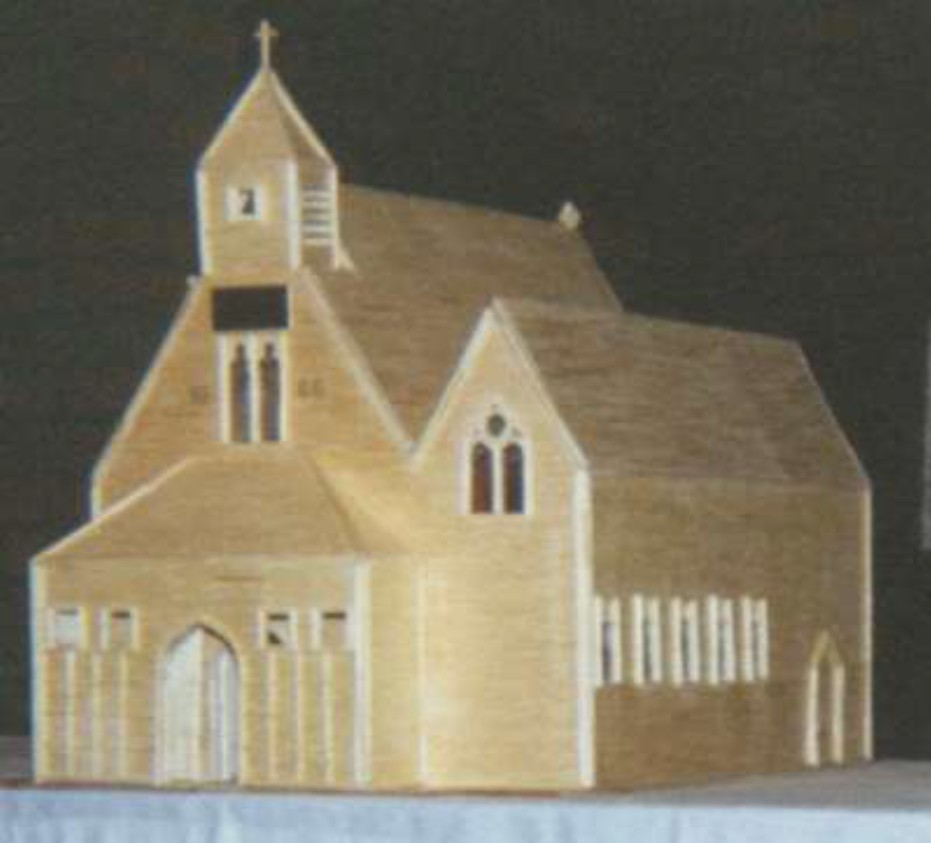
The model now resides in its own display cabinet in the entrance hall. Terry will be remembered with much affection.
Acknowledgements : “Windsor A Thousand Years – a living history” published by Windsor Local History Publications Group 2000
Pictures of the first Church
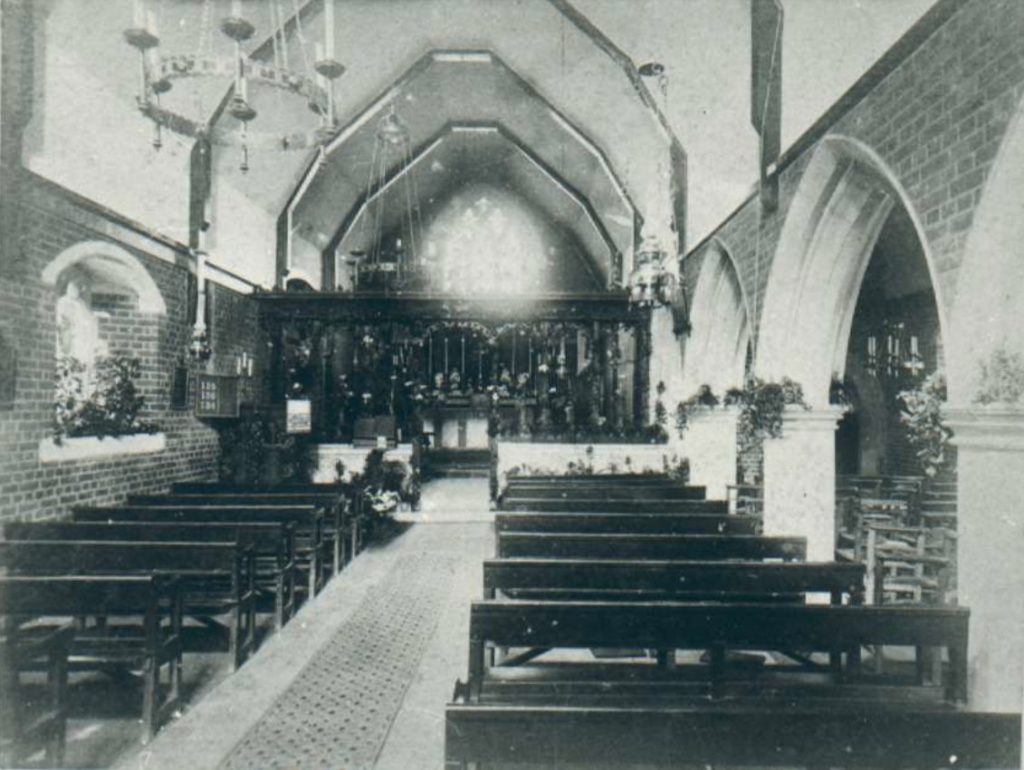
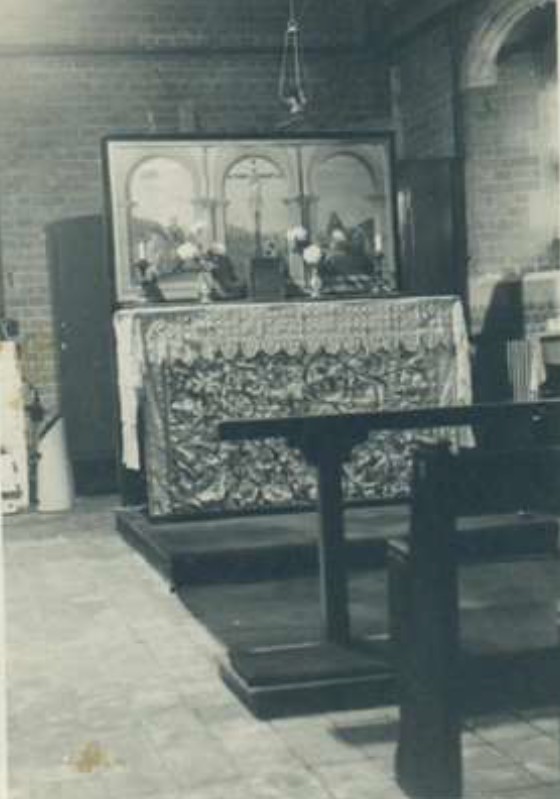
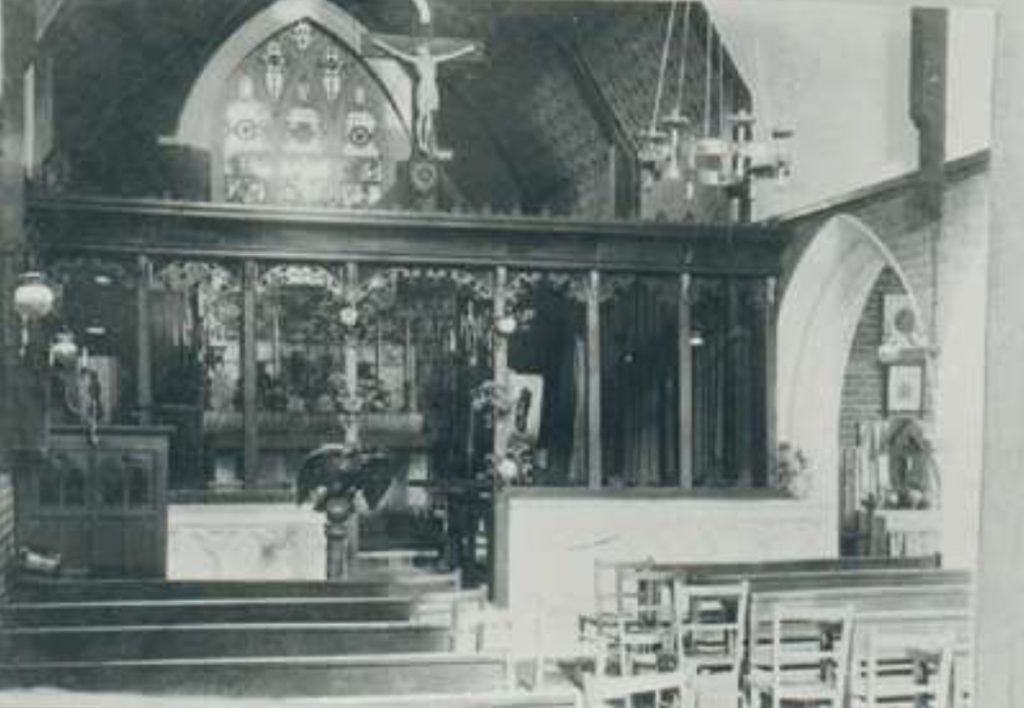
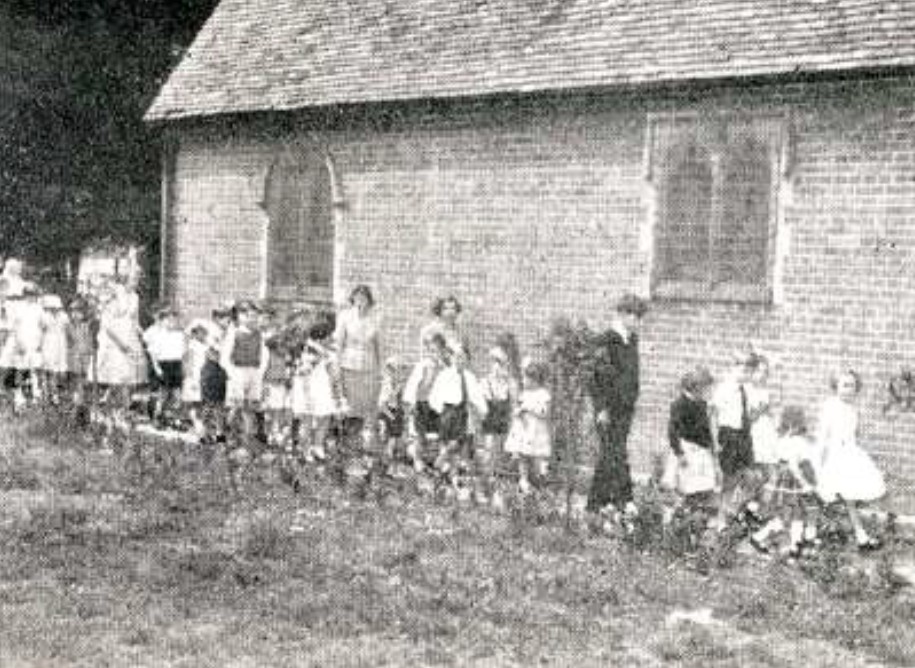

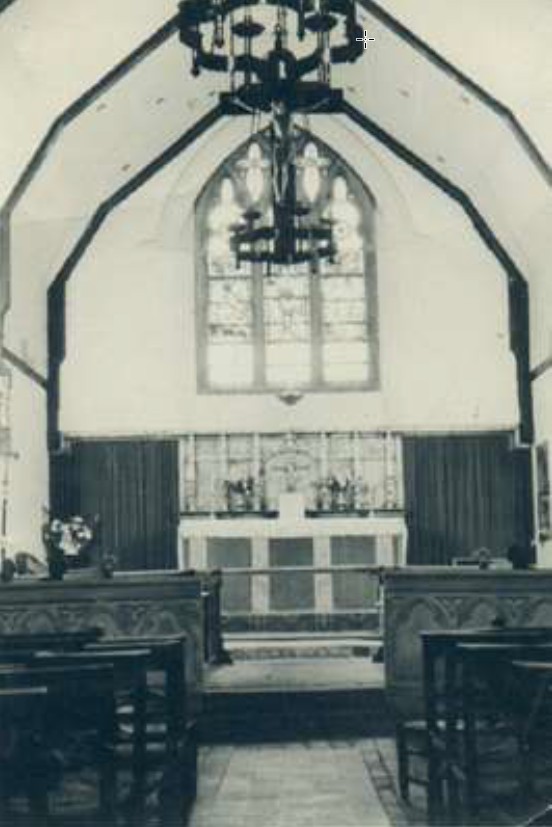
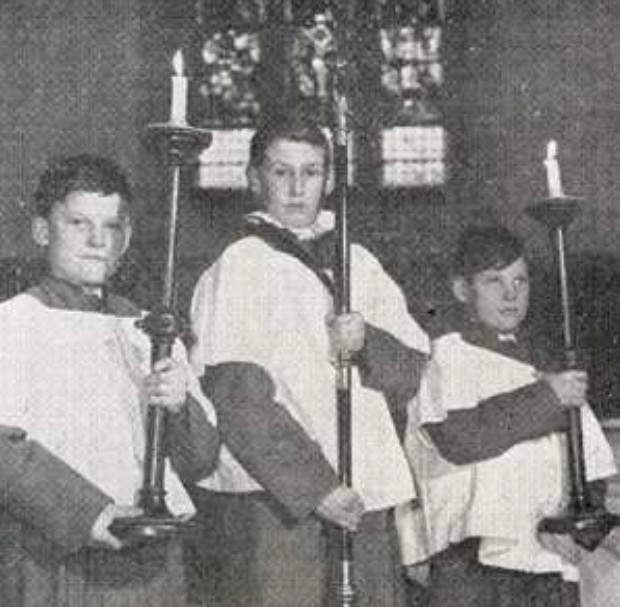
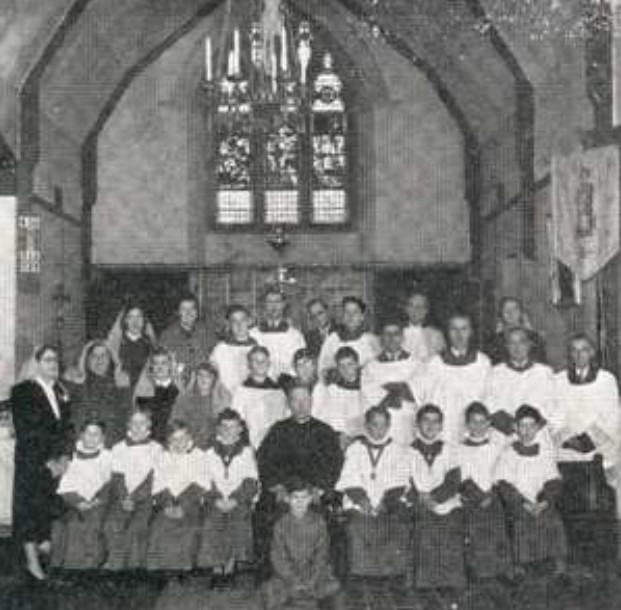
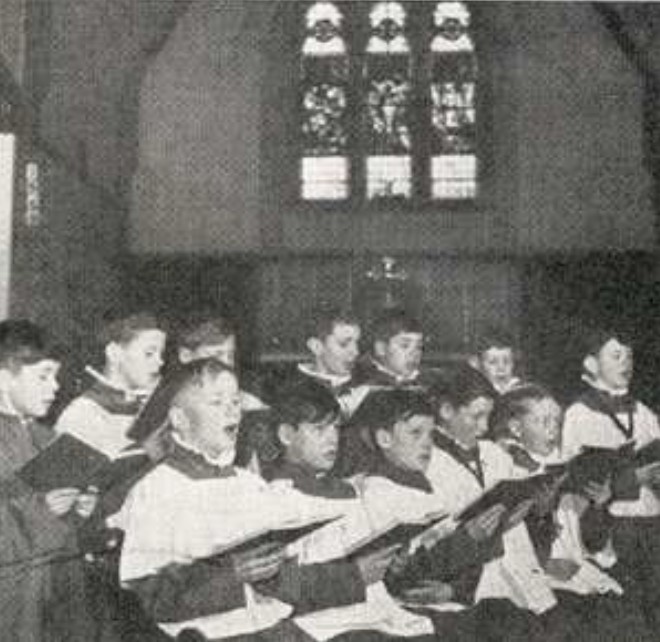

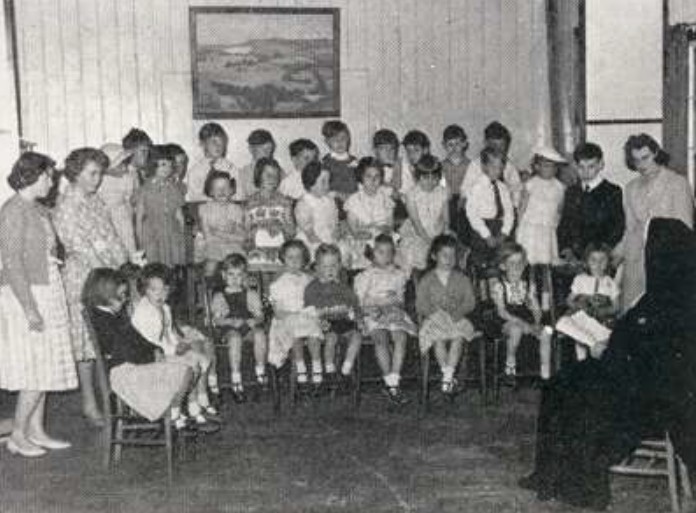
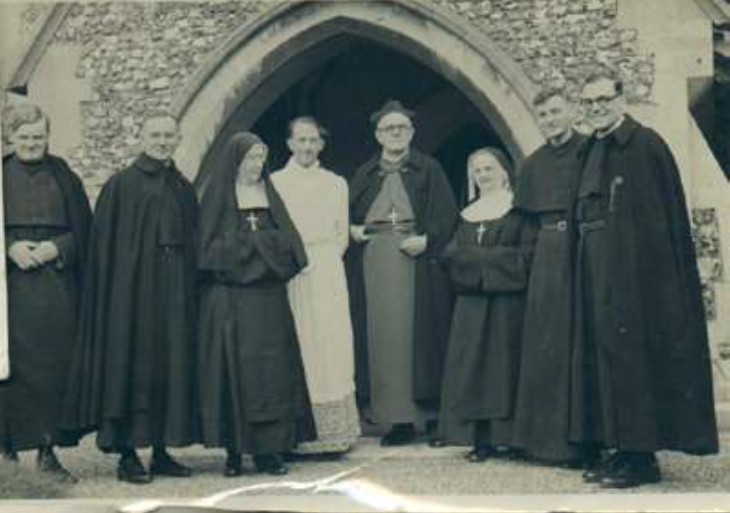
The following PDF supports text in both the first church and second church sections:
“We give thanks to Revd Alan Clements for the press cuttings in the PDF below. They cover the period 1970 to 1973 and provide detail behind some of the text we have here. Alan was churchwarden for All Saints Dedworth during this period of demolition of the old Bodley designed church and rebuilding of the new church centre.”
If you wish to download a copy as it may be easier to read and zoom in click the following link: All Saints Church History 1970 to 1973.pdf
The second Church building – 1972 to 2000
Tony Monk, of the architects Hutcheson, Locke and Monk, was appointed to draw up plans for the new building at All Saints. The specification was for a multi-purpose building that could seat 150 people, but could also be partitioned to allow other activities like meetings and play groups. The new building was to contain a kitchen and toilets. The Morris stained glass windows were to be incorporated in to the new building in display cases (backlit by neon lamps), and the old bell would be reinstalled in the bell tower which was to dominate the entrance. Plans for the new church were presented to Windsor Council for approval in April 1971.
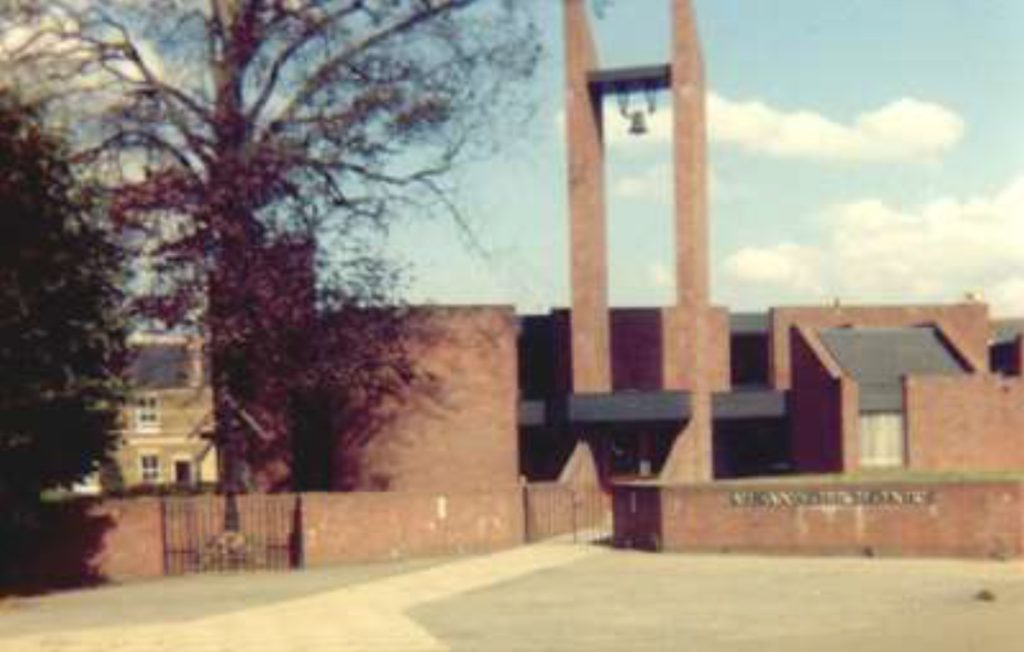
In the 1970s

Spot the differences with this drawing and the picture below taken in 2004
The cost of the new building was £35,000. Grants were obtained from the Church Commissioners and the Oxford Diocese. All Saints used £5,000 from Church funds and this left £6,000 to raise. In July 1971 the Parochial Church Council (PCC) organised a Summer Fete which raised £272 towards the building fund. Work started on the rebuilding late in 1971.
Two of the Morris windows, which together depicted the Annunciation, could not be incorporated into the new building and so the PCC sought to place these windows elsewhere. One scheme involved selling these windows to our ‘sister’ church at St James in Woodley, Reading for £100. (At that time St James was an almost identical building to the proposed All Saints in Dedworth.)
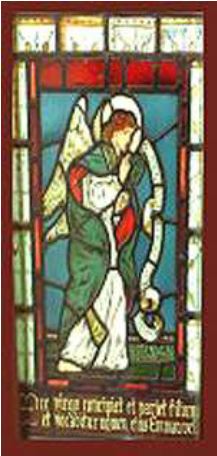
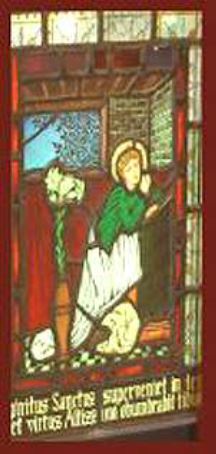
However the Victorian Society and others in Windsor stopped the move. So for the next 10 years these windows were stored at the Worshipful Company of Glaziers in Aylesbury in a state of disrepair. In 1982 they were restored and loaned to the Royal Holloway College in Egham, for a Victorian exhibition, where they remained afterwards. In 1996 these windows were displayed at the Morris centenary exhibition at the Victoria and Albert museum and several offers were made to purchase them (which we refused). Subsequently they went back into storage in Egham, until finally these windows were reinstalled in the Church in 2000.
Work was nearly complete on the new building when the foundation stone was laid and blessed in November 1972. – This can be seen in the church vestibule. Work was completed, and the first service in the new building took place on Sunday 28th January 1973. On Saturday 9th June 1973 the Bishop of Reading came to conduct the service to dedicate the new Church.
Subsequently there have been several changes to the Church.
In the 1970s the large Elm trees that encircled the church suffered Dutch Elm disease and had to be cut down. Baby Elm trees still grow around the grounds but they die off after 5 or so years growth – the Dutch Elm disease is still present in them.
In 1980 the church was extended to add the Unity Room, kitchen and toilets at the Church Terrace side of the building at a cost of £25,000.
In June 1980 the Bishop of Reading, Eric Wild, came to bless the new rooms.
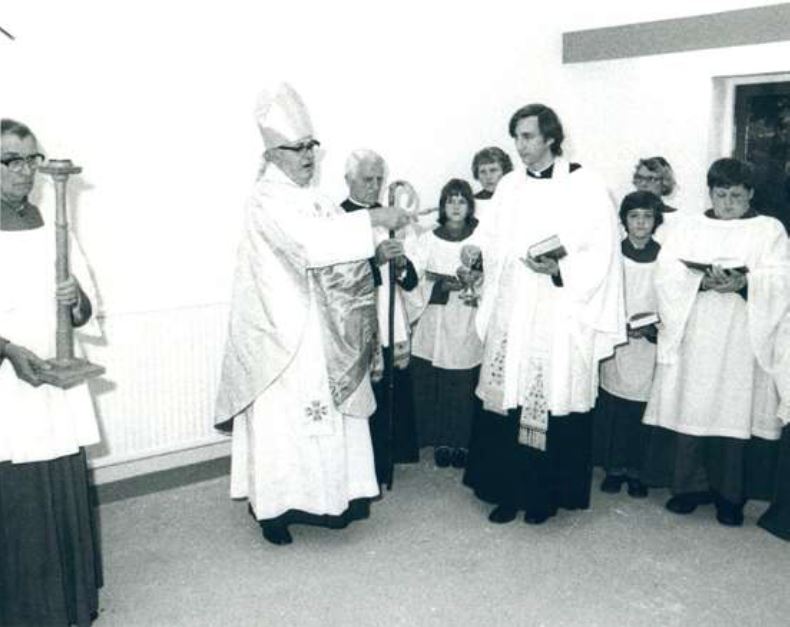
On the left is Bob Woodcock who faithfully served at All Saints for more than 50 years. Margaret Hunt, who was churchwarden at the time, is at the back on the right.
Many strangers had said that they did not recognise the building as a Church and so the PCC decided to replace the original church bell in the tower with a metal cross. (The bell is now in the vestibule and rung on ceremonial occasions). The cross was designed and built by 6th form members of the Princess Margaret Royal Free (PMRF) School as part of their A-level Engineering course work. The cross was installed in early 1985 on a cold day with snow flurries!
In 1988, as the church continued to expand, it was decided to demolish a garage and store room which were part of the 1972 church buildings and replace them with the Link Room. The Link Room was finished in November 1989 at a cost of £45,000 which was partly supported by a legacy from the late Doris Turner. Doris had been a regular member of the congregation in the 1950s and 60s before she retired to the South Coast.
By 1998 there were two major problems with the building:
– Firstly, the flat roof over the main Church hall had passed its useful life time – it was frequently leaking and in need of an expensive repair. It is believed that in 1972 the Bishop had said that the new building would only have a 20 year life. So the roof lasting 26 years was a good testament to the Churchwardens who had patched the roof many times!
– Secondly, the usage of the church building had grown and it needed to expand to enlarge the capacity the main church hall, provide a welcoming entrance vestibule and improve the kitchen and toilet facilities.
Over the next two years plans were developed for extending the church and replacing the flat roof with a longer-life sloping one. One additional part of the plan was to move all the Morris windows so that they would be lit by daylight and to create a location to reinstall the Annunciation windows after more than 30 years of being in storage.
The Church was closed at the beginning of November 1999 to enable the building works to progress at full speed. Whilst the building work took place All Saints’ services moved to the nearby Baptist and Catholic churches. By the end of February 2000 the work was complete and the re-roofed and extended Church was in full operation in March 2000. On 23rd October 2000 the Bishop of Reading (Bishop Dominic) came to bless and dedicate the new building.
The cost of these building works came to about £250,000 and this sum was raised by the congregation through generous donations, fundraising and Grants from many external bodies – to whom we are most grateful.

Can you spot the differences with the 1970s picture above?
• The bell which was hanging in the tower is replaced by the cross
• The elm trees were cut down
• The wall was lowered and the front grounds opened up
• The old war memorial had been damaged in a car chase and moved to be incorporated within the Memorial Garden
• The flat roof was replaced
• The front of the church was extended forward to form the new vestibule and house some of the stained glass
All Saints in the 21st Century
The Memorial garden
In 2004 the PCC decided to create a garden at the front of the church which could be used as a memorial. The new wall and tiered seating incorporates the Memorial to Wallis Wilson as well as providing a place where flowers can be left.


The Running Man
‘I am come that you may have life, life in all its fullness,’ Jesus declares as he joyfully leaps from the cross, his face broken by a huge grin and his arms open in a welcoming gesture.

The sculpture of Christ on the tower cross of All Saints’ Dedworth is named Crucifixion/Resurrection. It was installed for Easter 2010.
The sculptor was Gill Ledsham (Artist in Residence at Windsor Boys’) assisted by Parus Sharma, Victor Walker and the Windsor Boys School. Gill explains – in deciding how to portray Jesus Christ as a man dying, as a criminal, but also the Lord God, the views of some 200 students were taken into consideration. This image of kindness, generosity, hope and forgiveness, coming off the cross is the result.
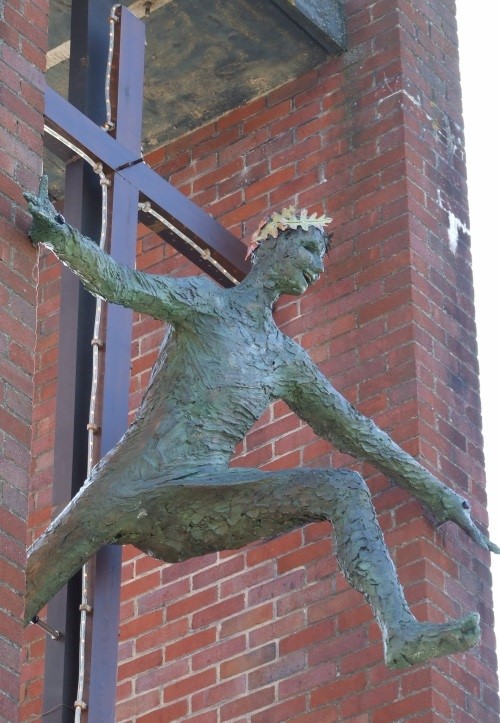
This verse from the gospels was especially directive: “I am come that you may have life, life in all its fullness” John 10:10. The resurrection is a joyful victory, joy such as that found on the sports field where team sports are played. Arms are flung open with the intention of embracing fellow team mates. In this work Jesus is leaping from the cross, running to embrace his friends, arms wide, and laughing with joy. The crown of thorns is now the victor’s olive crown.


The Visitation – Sculpture in the Porch by Gill Ledsham

I made a sculpture on this theme when I was a student in Florence. Although it was cast at the time, I have no idea where it is now though I have photos of it. About ten years ago (2010?) I made the sculpture now at All Saints because I had a different concept of the story.
Mary must have been about 14/15 years old. No doubt there was chatter in Nazareth – after all she could have been stoned – it happened sometimes… Joseph, anxious for her, sends her to stay with her cousin Elizabeth. Elizabeth is married to a priest on the rota of priests at the temple in Jerusalem and is also pregnant (her son will become John the Baptist). It would have been a long journey; Mary would have joined a walking caravan, travelling at the pace of the slowest walker and resting on the Sabbath. It may well have taken several weeks. As Mary arrives in sight of Elizabeth’s home Elizabeth sees her. Mary runs towards her, slips and Elizabeth catches her. Elizabeth and Mary have that great conversation and Mary says her wonderful poem of faith and joy.
As usual, it took me a long time to arrive at this concept and choose a composition made of a series of interlocking arches. Of course, fabric folds are curved but I felt that the work needed some sharpness and Mary falling suggests the later stresses in the narrative for both of them. I chose a style of clothes that I hope is neutral and modest, not too feminine. I know that women feel a particular empathy towards these characters but I have played down their femininity so as not to exclude men. I have sometimes wondered if there should be a copy of the relevant biblical passage nearby or attached to the base.
I hope people will look at the work and not feel they have to plough through lots of words nor did I want to write something that would inhibit them from making their own interpretations.
The Porch.
In 2011 the church was enlarged with the Porch – a development for the community. Two consulting rooms are available to hire and the Unity Room has been updated and turned into a smart cafe. The patio as was is now a secure courtyard with the Fig Tree growing extremely well in the centre. The new circular seat (remembering John Tilley – a long time church Treasurer) was installed on the weekend of the celebrations at Harvest 2011 to declare the Porch open.
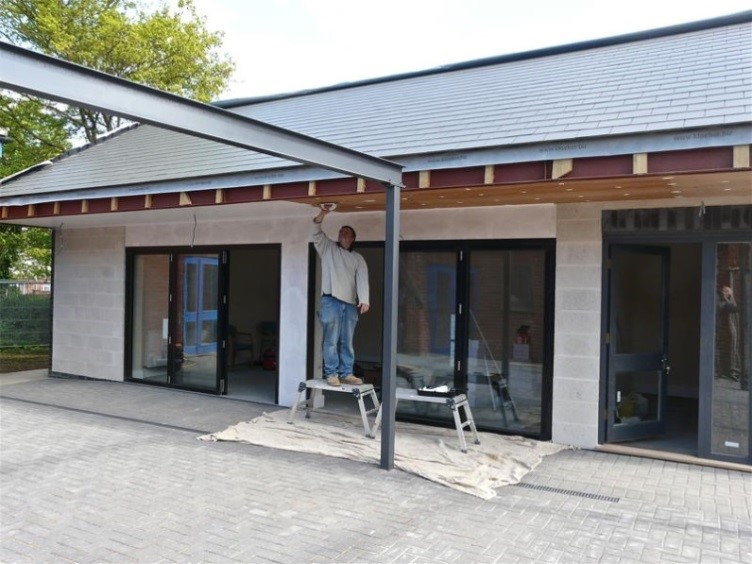

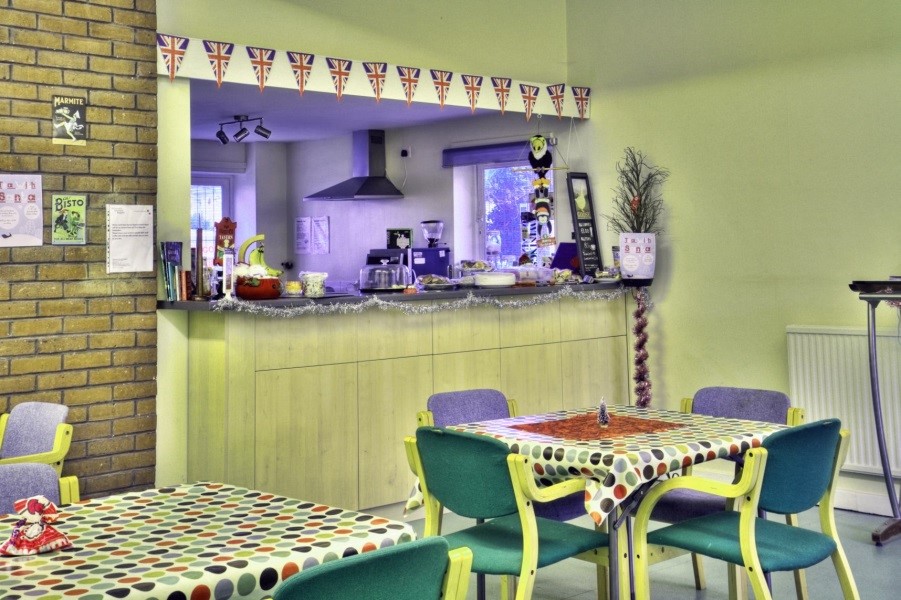

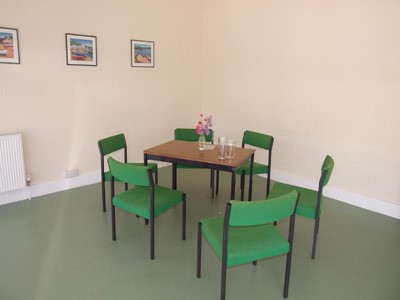
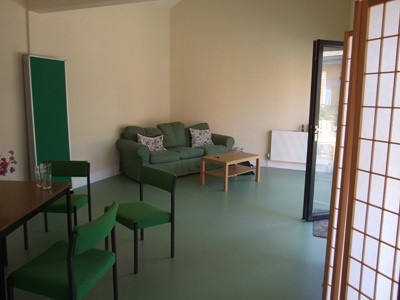
Wall paintings in Link Room
In February 2015 Carolyn Carter was asked to create murals to adorn the walls of the Link Room. These depict various scenes from Jesus’ life. Selections of images from this work are below. Carolyn lived locally in Dedworth and was a regular member of the church for the first 20 years of her life before going to university and then living in Bath.
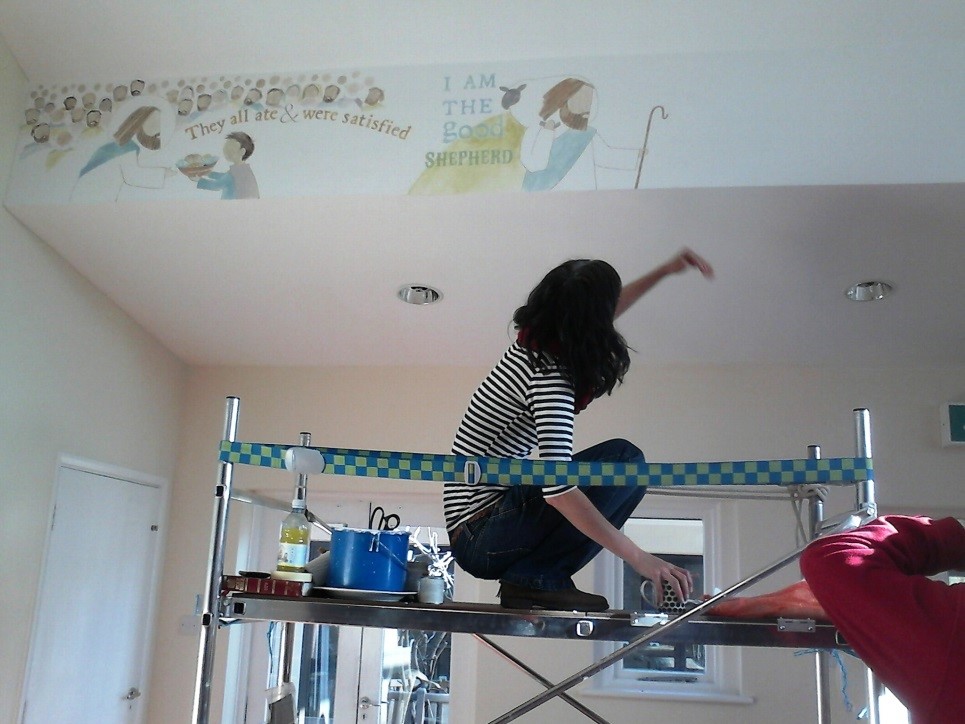

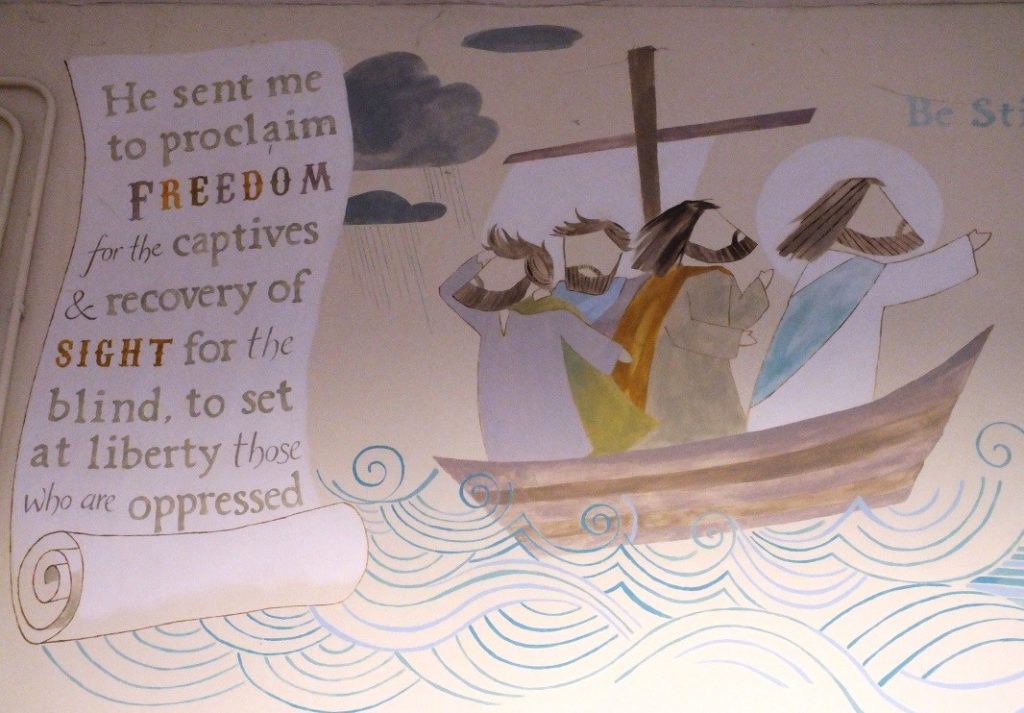

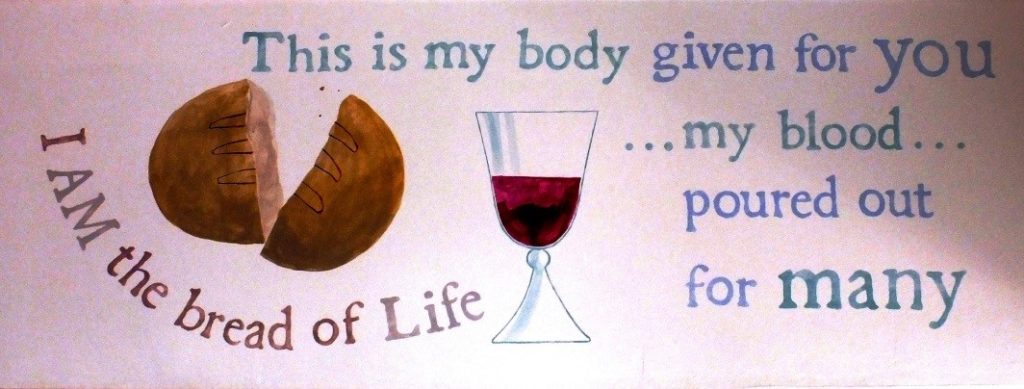
Visit https://www.carolyncarterart.com/ to see other examples of Carolyn’s work.
Crucifixion and Resurrection Mural
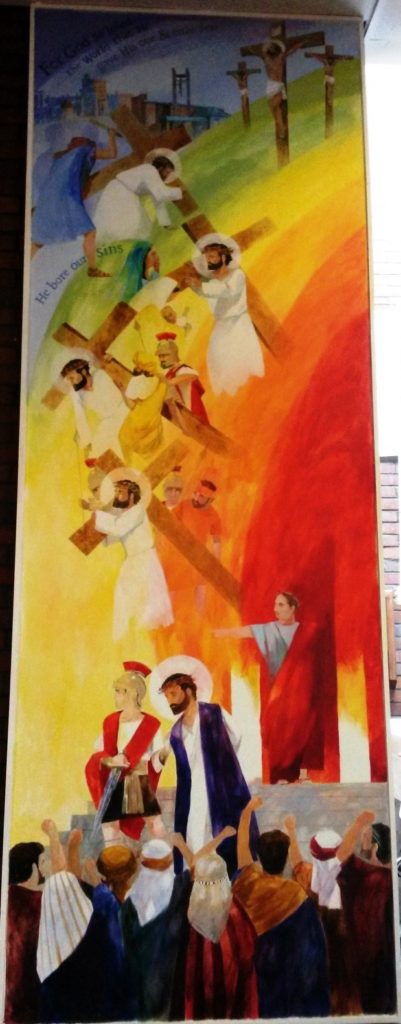
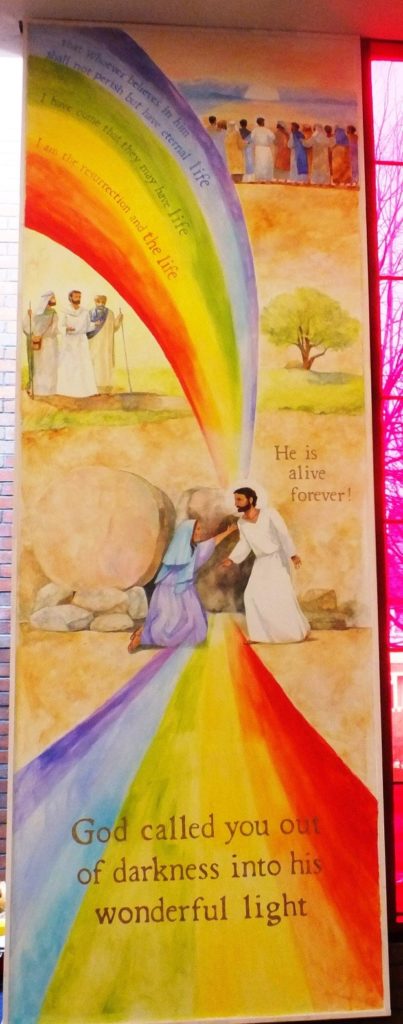
Note – the left hand panel photo shows the work at a stage before completion. The close-ups below show more detail.
The Mural, on either side or the altar, was painted in late October to early November 2015, over 18 days, by Carolyn Carter and was commissioned by the Rev. Louise Brown. It depicts the journey of Jesus to The Cross on the left-hand panel and the story of The Resurrection, with some of the events afterwards, on the right-hand panel.
The rainbow-like colours of the mural link the two panels as one story, working across the space so that the events and momentum flow from one to the other. The colours are not in the usual order for a rainbow, the red is on the inside and the blue/lilac on the outer edge. The blue part of the spectrum is suggested as ‘sky’ to create space and landscape, where a depiction of All Saints Church, Dedworth, and Windsor Castle are set behind. There is a ‘hill’ effect created by the arc of the rest of the rainbow on which the events are staged. The red at the bottom also communicates the emotion and anger of the condemning crowd.
This reversed rainbow also exists in the natural world, called a ‘Sun Halo’, which sometimes encircles the sun or moon, a visible spectrum of colours is caused by the light and radiance around them.
In the book of Ezekiel, chapter one, the throne of God is described in a vision the prophet sees… “Like the appearance of a rainbow in the clouds on a rainy day, so was the radiance around him.” (Ezekiel 1.28)
In Genesis 9 God sets a rainbow in the sky after the flood that destroys the whole earth, it is a reminder to man of the promise of God to save the earth – ‘it will be a sign of the covenant between me and the earth’.
The colours, like a rainbow, that run through the mural therefore signify PROMISE and GLORY. God’s PROMISE to save is ultimately fulfilled in sending Jesus, who’s name means ‘God Saves’, and in chapter one of the book of Hebrews, Jesus is also described as the radiance of God’s GLORY.
The colours flow through the events of Jesus’ journey to the cross and into the tomb, as depicted on the right-hand panel. Here the resurrected Jesus is depicted also appearing to his friends after he was raised. John says of Jesus, in his gospel, “In him was life, and that life was the light of all mankind”. The visible part of the light spectrum, these colours also represent Jesus as the LIGHT of the world. Jesus said of himself “I am the light of the world. Whoever follows me will never walk in darkness, but will have the light of life.” (John 8.12)
The colours then flow out of the place of Resurrection to us, 1 Peter 2.9 is paraphrased here “[God] called you out of darkness into his wonderful light”. Jesus said of those who believe in Him “You are the light of the world”.
Jesus said about himself “I have come that they may have life’ (John 10.10) and ”Because I live, you also will live“ (John 14.19). This PROMISE is for us! Peter states to everyone who could hear him, as he spoke to the crowds at Pentecost, recorded in Acts 2, “The promise is for you and your children and for all who are far off”. This is the PROMISE of eternal life, and that life is in Jesus. (1 John 5.11-13). Paul later writes “The same Spirit of God who raised Jesus from the dead lives in you” (Romans 8.11) and again..”God has chosen to make known the glorious riches of this mystery, which is Christ in you, the hope of GLORY” (Colossians 1.27).

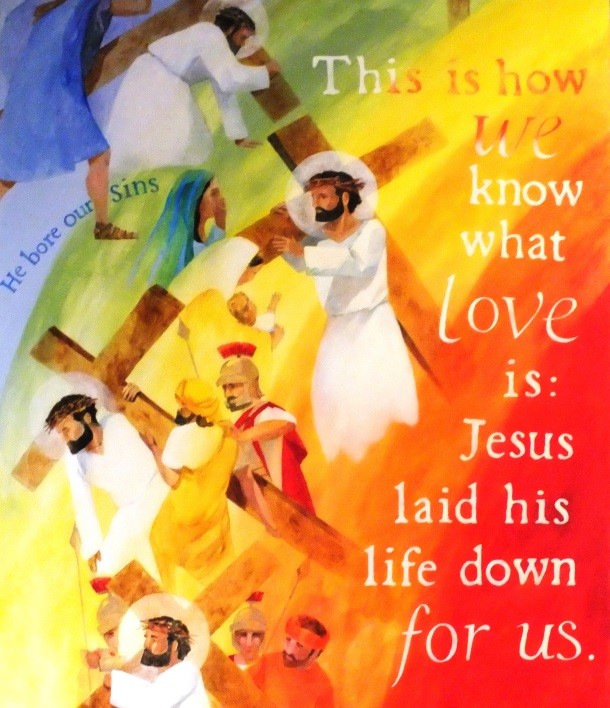
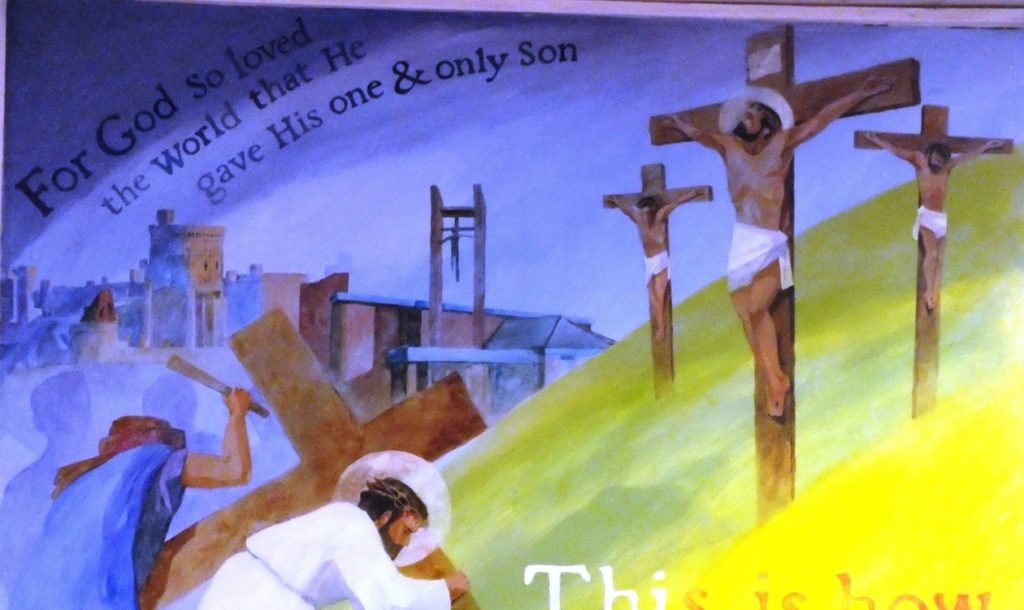
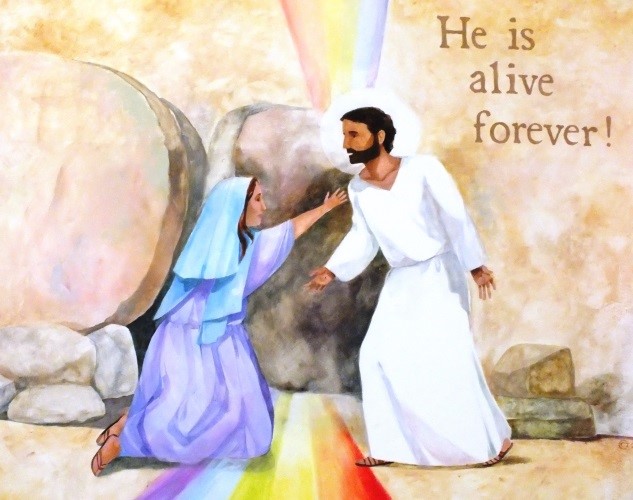

The Fig Tree Chapel
In 2016 it was decided to complete the design originally planned for the 2000 building works. Namely to add sound proofed sliding doors between the Link Room and the main church hall. This would enable the Link Room to be used as a chapel and quiet meeting room – whilst allowing the partition to be opened up at times when the church hall needed to accommodate a larger event.

William Morris and All Saints’ Dedworth
William Morris was an Essex man and one whose aspirations and achievements have had a profound effect far beyond his native county.
Morris was born at Walthamstow which was then a suburban village on the edge of Epping Forest. He was the son of prosperous middle class parents. When he was six the family moved to Woodford Hall, a large mansion with extensive grounds. His father died when Morris was thirteen but five years before that the two of them had visited Canterbury Cathedral. Later Morris recalled his impression that “the gates of Heaven had opened”. The family moved on to Water House in Walthamstow which has since become the William Morris Gallery.
It is clear that the early memories of his childhood had a particular significance for Morris and were always precious to him. In almost every aspect of his work, poetry and stories, designs for wallpaper, fabrics, tiles and furniture, stained glass, metal ware and jewellery, evidence can be found of the sights which so delighted him as he grew up in the Essex countryside.
In 1861 the firm of Morris, Marshall, Faulkner & Co was established. In addition to Morris himself, other distinguished artists and craftsmen such as Rosetti, Burne Jones and Madox Brown placed their talents at the firm’s disposal. Morris led by example and had untiring energy. His chief recreation seems to have been to indulge in a different kind of activity. Over 600 of his original designs have survived, their chief characteristics being an absolute mastery of pattern and skillful use of bright colours.
“The firm” supplied the stained glass windows for Bodley’s original building of All Saints, Dedworth. The windows were designed, made and installed in All Saints between 1863 and 1888.
Three stained glass panels, which originally formed the East window of the old church, have been installed in the Church foyer. The centrepiece is Rosetti’s Crucifixionwith Burne Jones’ Nativityon the left and Morris’ Resurrectionon the right. Also in the foyer are Burne Jones’ Annunciation between Burne Jones’ St Elizabeth and Madox Brown’s St Anne.
The remaining windows are installed on the North facing wall of the main church hall. All have an attractive background of clover and hawthorn. Six windows are mounted in the window next to the organ. St Gregory, and St George are by Burne Jones, and the window of St George is noteworthy for a spelling mistake – it is not known who was responsible. The other windows are Morris’ St Catherine, and Burne Jones’ Virgin and Child, St Nicholas and St Ursula. There are two other windows mounted in a vertical light box behind the Altar. Both are by Burne Jones’ – St Margaret and St John the Evangelist.
What Morris would have made of the present building is open to conjecture; one suspects he would probably not have approved. Surely, though, his heart would have been gladdened to see windows from “the firm” maintaining the link from his times to our own.
Details of the stained glass windows
The Triptych

Centre. The Crucifixion by Rossetti
Right. The Resurrection by William Morris
These three windows were made in 1863 and originally installed in the Chancel window.
The Nativity shows Mary, Joseph and the baby Jesus with Shepherds and Angels. The emblems of St Matthew and St Mark are above. Burne Jones’ cartoon for the Nativity can be seen in the Birmingham City Art Gallery.
The Crucifixion is depicted with Mary the mother of Jesus on the left and St John the Evangelist on the right of the cross with a flying Angel on each side. The Sun and Moon emblems are above.
The Resurrection shows Jesus with his disciples and angels. The emblems of St Luke and St John are above.
Documentation in the minute book dated December 1862 states – “Agreed that Rossetti having drawing a cartoon of the ‘Crucifixion’ for the Dedlicote window centre light, Jones do one of the ‘Nativity’ for one side light and Morris one of the ‘Resurrection’ for the other. Jones’ price be £5 but that Morris only have £3.
The Annunciation
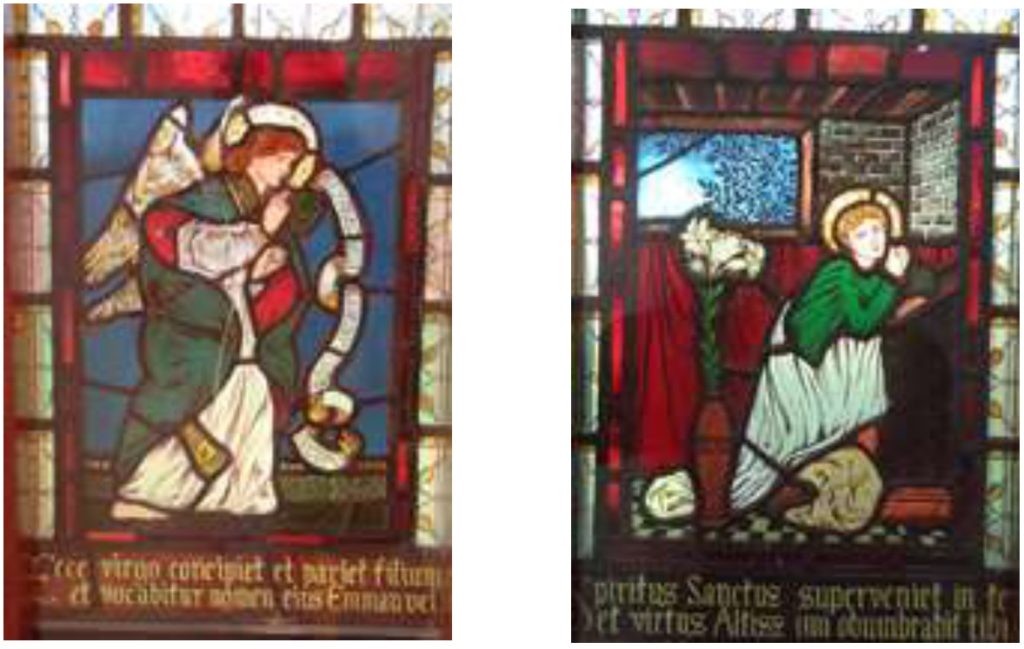
These two small windows were made in 1863 and originally installed in the South Aisle west window The left hand window shows the Angel Gabriel standing holding a large scroll. The right hand window shows Mary in a small room, kneeling with a large lily in a pot on the floor.
The inscription below the Angel is ‘Ecce virgo concipiet et pariet filium et volcabitur nomen eius Emmanuel’. This translates as ‘Behold a virgin shall conceive and bear a son and his name shall be called Emmanuel’. The scroll that is held by the Angel says ‘Ave Maria gratia plena Dominus tecum’ which translates as ‘ Hail Mary full of Grace, the Lord is with you’.
The inscription below Mary is ‘Spiritus Sanctus superveniet in te et virtus Altissimi obumbrabit tibi’. This translates as ‘The Holy Spirit shall come over you and the power of the Most High shall overshadow you’.
Burne Jones’ cartoon , originally designed for tiles and previously used at St Martins’ Scarborough, is in the Birmingham City Art Gallery.
St Anne and St Catherine
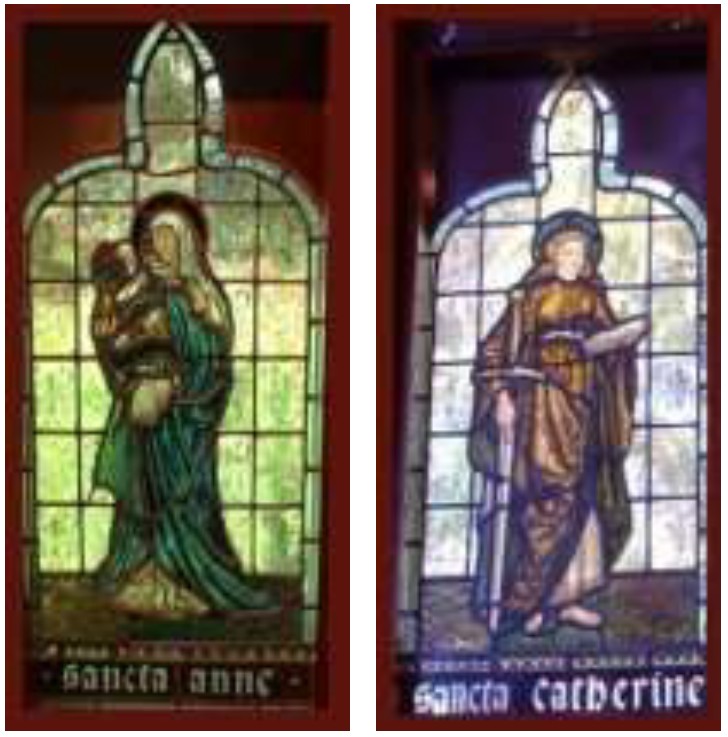
Right. St Catherine by William Morris
These were made in 1873 and originally installed in the South Aisle central window. They are not displayed next to each other now, Saint Anne being by the front door and St Catherine in the main church by the organ.
St Mary the Virgin and St Nicholas
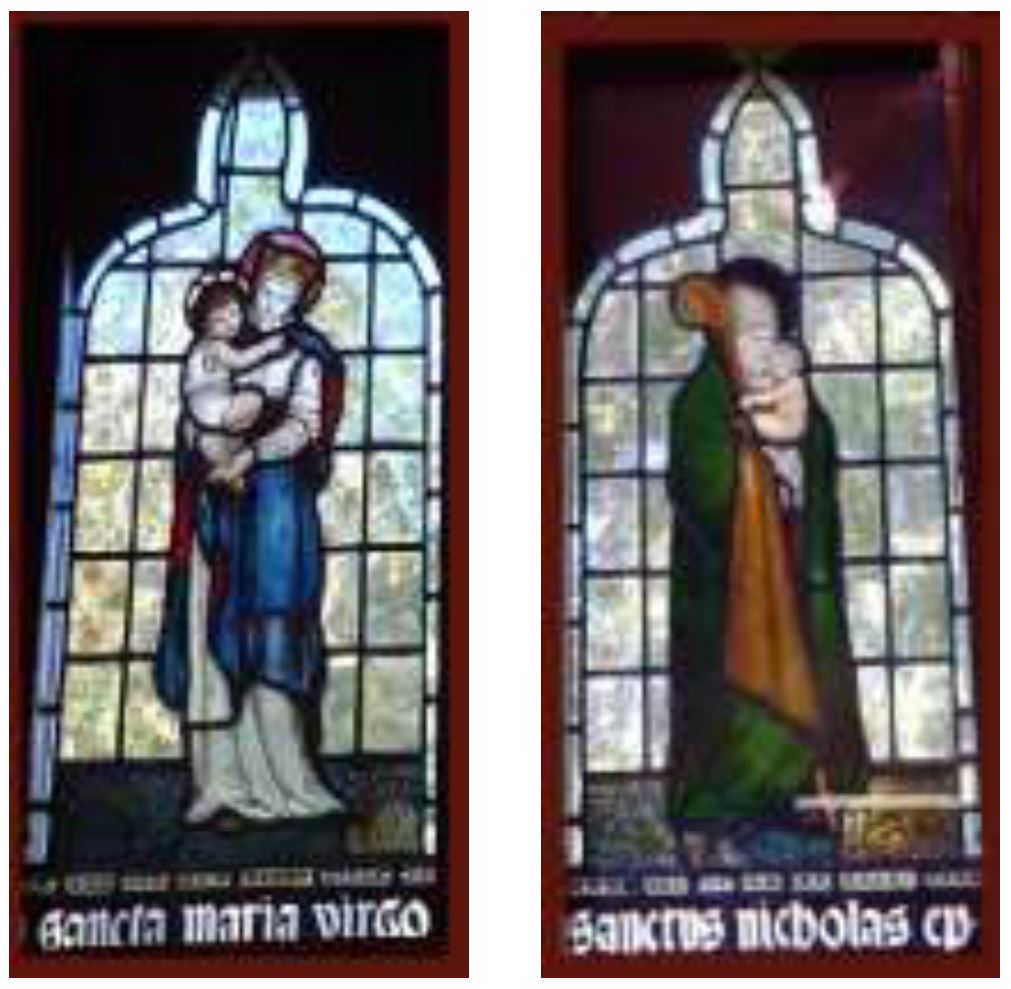
Right. St Nicholas with Babe by Burne Jones
These were made in 1877 and originally installed in the South Aisle east window. The Virgin and child is inscribed Sancta Maria Virgo and shows Mary in a blue and white cloak. Unusually the Virgin is crowned. St Nicholas is in a green cape lined with gold.
St Elizabeth and St Gregory
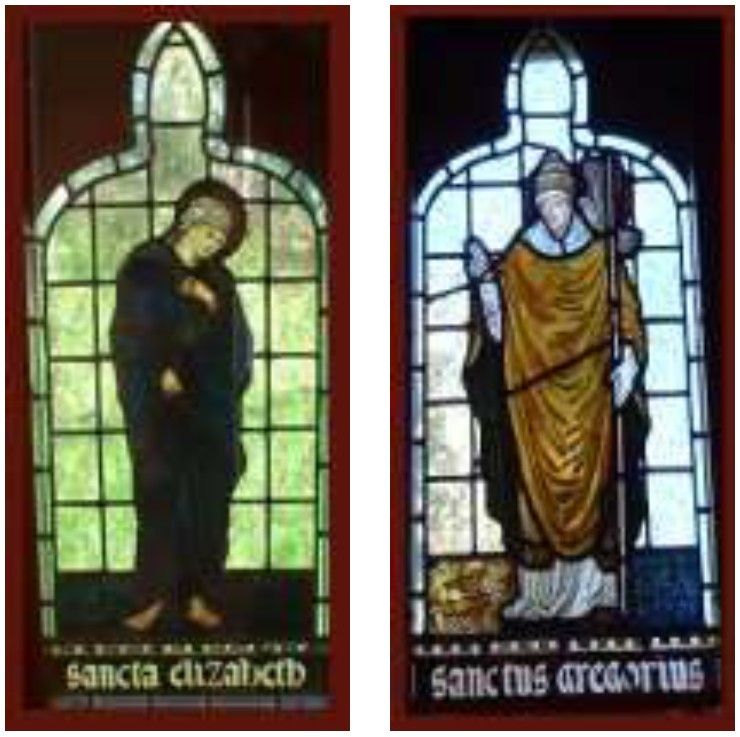
Right. St Gregory by Burne Jones
These were made in 1881 and originally installed in the North Aisle central window. St Elizabeth is in a dark blue robe over green. St Gregory is in gold vestment lined with dark green.
St George and St Ursula
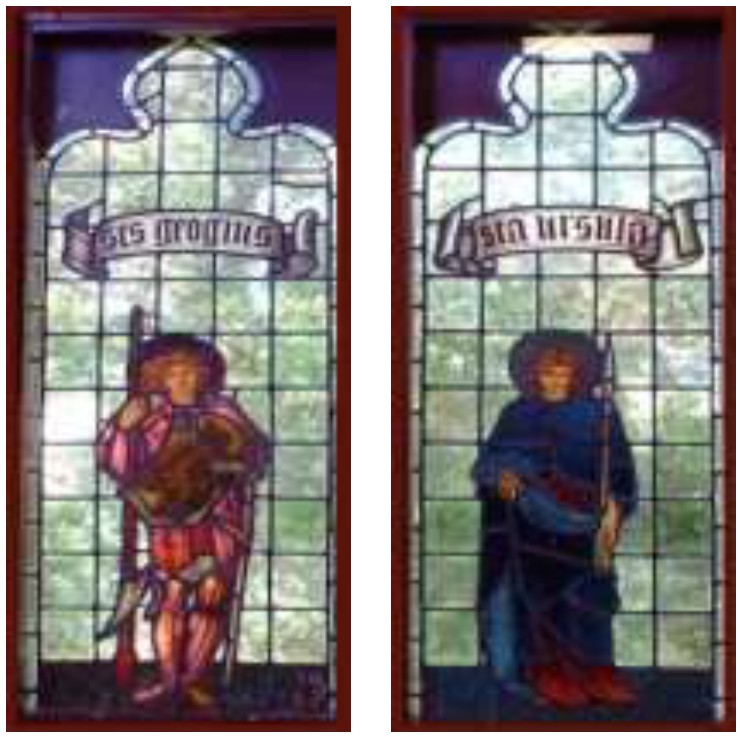
Right. St Ursula by Burne Jones
These were made in 1887 and originally installed in the North Aisle east window. St George is in orange red armour. St Ursula is in blue over red with a green halo.
St John and St Margaret

Right. St Margaret by Burne Jones
These were made in 1888 and originally installed in the North Aisle west window. St Margaret is in blue and green and shown walking on a red dragon. St John is holding a copy of the bible with the inscription ‘In principio erat verbum et verbum erat apud Deum’. This translates as ‘In the beginning was the Word and the Word was with God’.
The priests that have served at All Saints
From 1866 All Saints operated as a daughter church of St Andrew’s, Clewer and responsibility for it rested with one of the curates from St. Andrew’s. From 1900 to 1950 there was a new priest every 2-3 years.
The register begins on 11th October 1911 when the Curate-in-Charge was G.B.Budibent, but already by November of the same year that had changed to A. F. Bliss, although Mr. Budibent continued to take services at All Saints along with the Rector of St. Andrew’s, Arthur T.C.Cowie, and many other people until 25th November 1917 when E. Keith Keily was put in charge until 30th March 1919.
This pattern continues under William Elwell as the Rector at St. Andrew’s with no one person in charge for more than a few months in some cases, and never more than three years until 1st November 1945 when Nawton Hall was in charge until 13th March 1950.
After that Father A.R.Methuen was appointed on 14th April 1950 and remained in post at All Saints’ until 24th August 1975.
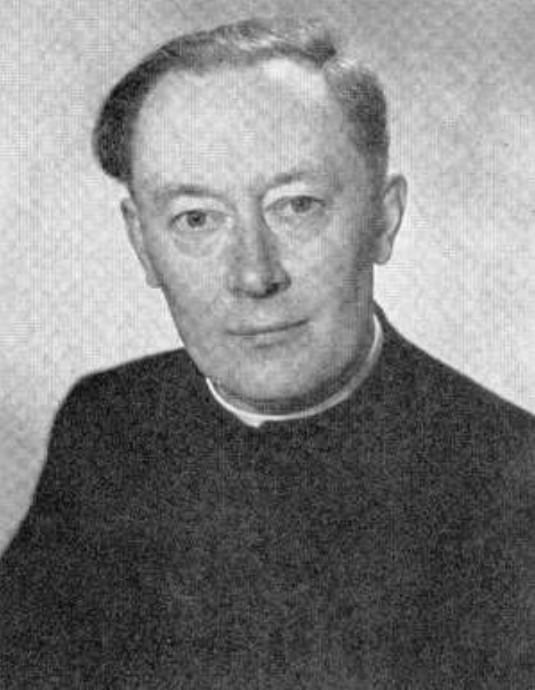
In 1950 Father Methuen started a 25 year period as Priest Missioner at All Saints’. He was much loved by the parishioners. Mrs. Methuen doing her part ran the Women’s Guild. In 1957 All Saints’ became a Conventional District, which meant the church had to run its own affairs. This time of his leadership saw a period of stability but also a dramatic change in the fortunes of the church building.
On 14th May 1976 Rev. John. Anthony Stone was appointed as Priest Missioner. He was a young man and brought a new lease of life to the community. He came with his wife Dilys, and their two young children, Ceinwen and Gwilym, were born during the time they were in Dedworth.
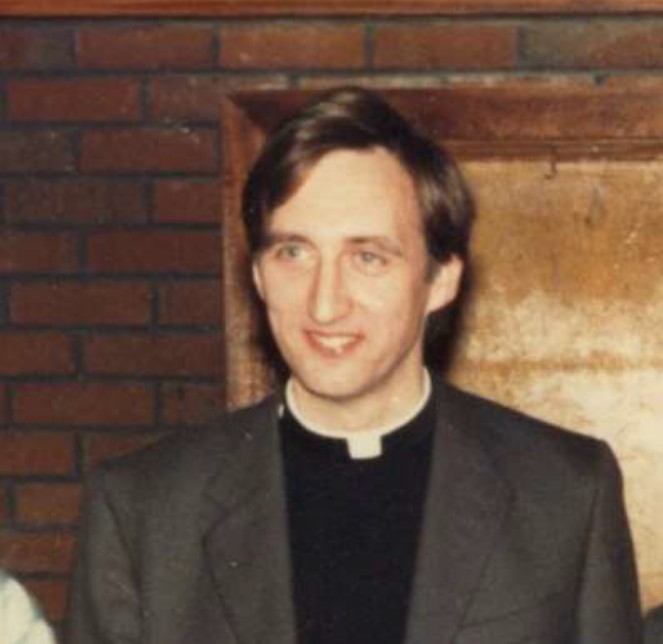
In 1982 All Saints’ became a separate parish, with Revd. John as its own vicar – the first Vicar of Dedworth (with Freehold).
Sister Gina (of the Convent of St John the Baptist in Hatch Lane) worked untiringly in the church as a Parish Worker from 1977. For a number of years she could be seen riding her Honda 50 around the streets of Dedworth – “the Nun on the pink motor bike”.
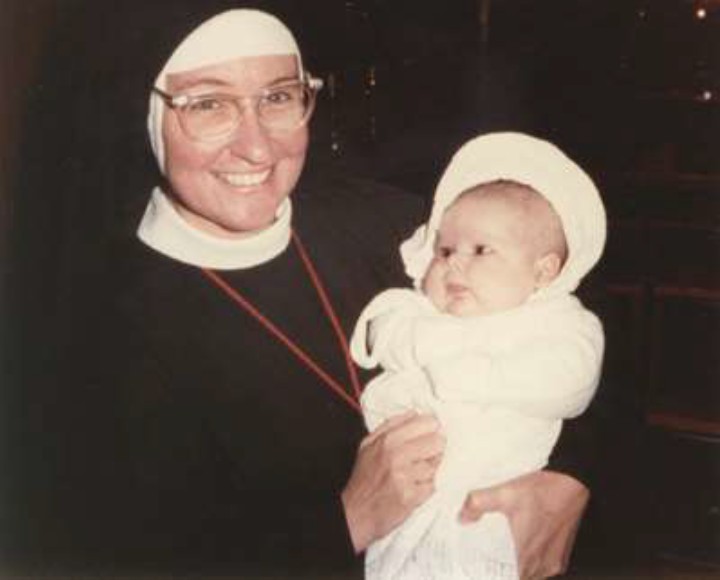
She left the Parish in the Autumn of 1992 to join another community in Somerset, before moving to work in Stoke on Trent, and then Brixton in London. She is currently doing pastoral work with the inmates at Wormwood Scrubs. She has kept in contact with members at All Saints and visits occasionally.
Following Revd. Stone’s decision to move on to a parish in North London, there was an Interregnum before Revd. Peter Duncan Atkinson was appointed as Priest in 1986. Peter and his wife Anne soon settled into the community with their two sons, Richard and Stephen.
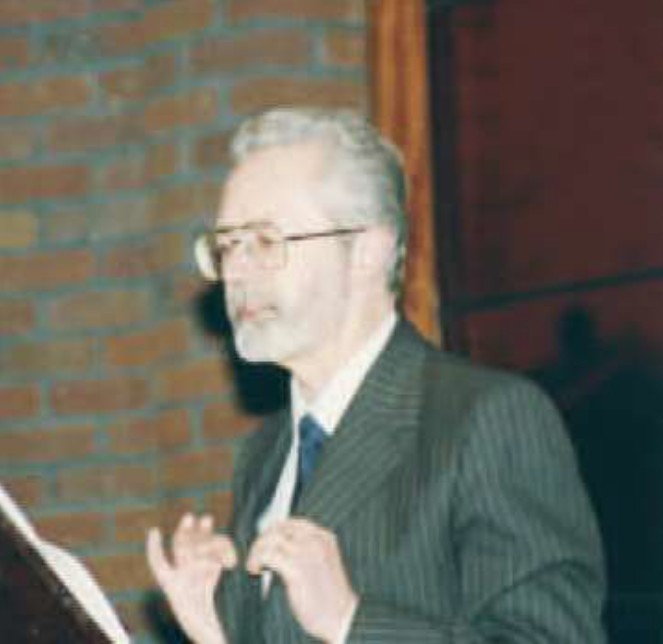
The Atkinsons moved on to another appointment in Aylesbury in December 1993.
After an interregnum of 11 months Revd. Louise Margaret Brown MBE was appointed. Revd. Louise started her work as Priest-in-Charge at All Saints in October 1994. She was made Vicar of Dedworth (with Freehold) in 1996.
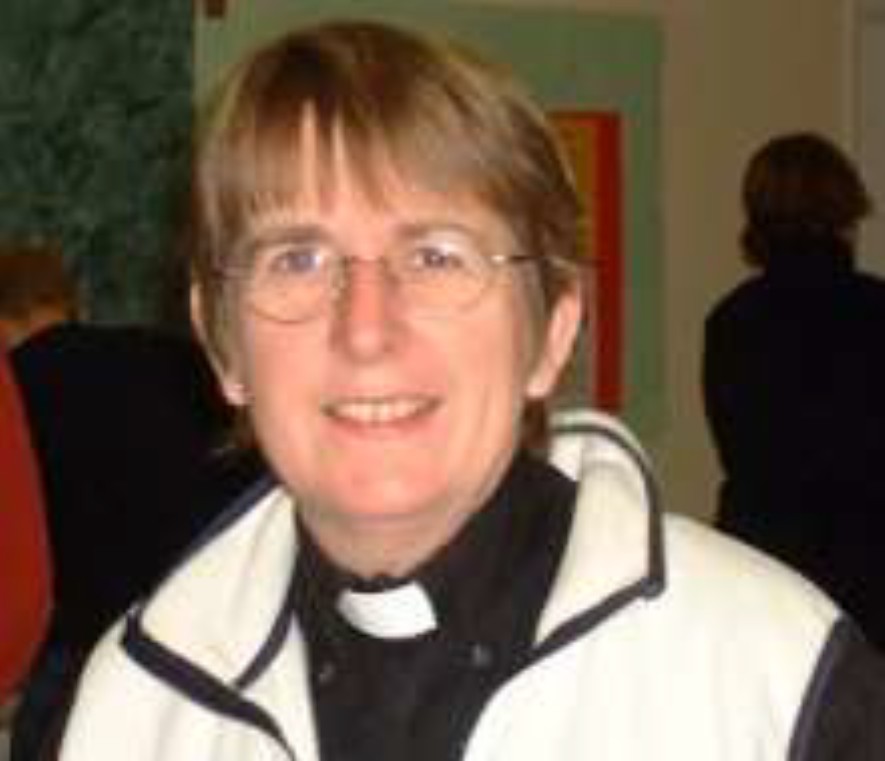
In 2004 Louise took on the additional role of Priest-in-charge of St Andrew’s, Clewer – a reversal of roles from the first 100 years! In Spring 2005 it was agreed that she would continue to run both parishes for a period of five years striving to bring the two congregations closer together, and with them, to help to spread the Good News across the area and serve the spiritual needs of the community. The Bishop licensed Louise for her new role for this period on October 7th 2005. Louise’s work at St Andrew’s ended when Revd. Rosie Webb was appointed as Vicar of St Andrew’s.
Louise was awarded the MBE in the Queen’s New Year’s Honours list in 2005 for her tireless work in the community including her role as padre for the army during the Iraq war.
On Sunday 18th October 2008 Rev. Louise celebrated 25 years since her initial ordination as a Deaconess on this day in 1983 at Barkham Church, near Wokingham. Her training was for two years in Bristol Theological college and a year in Topeka, Kansas, USA in a psychiatric hospital where she was chaplain. After ordination she served for nine months in her home parish at Barkham and Arborfield and then became a curate at St. John’s Woodley. During this time she became a Deacon and was among the first group of women in the C of E to do so. Eight years later she left Woodley and had a year of being unemployed due to the women’s ministry issues. She then served as a chaplain in the Royal Berkshire Hospital before moving to her childhood village of Shinfield for two years where she was ordained a priest before her move to Dedworth.
After serving at All Saints for 24 years Revd Louise decided to retire as a Parish Priest in May 2018 at her 65th birthday. Her last service at All Saints was on 20th May 2018. Louise has moved away from Windsor and is acting as Chaplain to the Horse Racing industry in Southern England.
Following a short interregnum, our new priest, Revd. Nigel Richards was installed by the Bishop of Reading on 1st October 2018. Nigel moved to Windsor from Warfield where he worked as a Curate at Warfield Church.
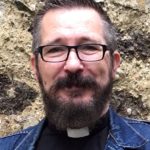
Nigel served the community of Dedworth with lots of energy. At the end of March 2020, and after 18 months in Dedworth, he has moved away to a new posting at St Margaret’s Church, Streatley. He will be sorely missed. His departure coincided with the start of the Coronavirus lockdown.
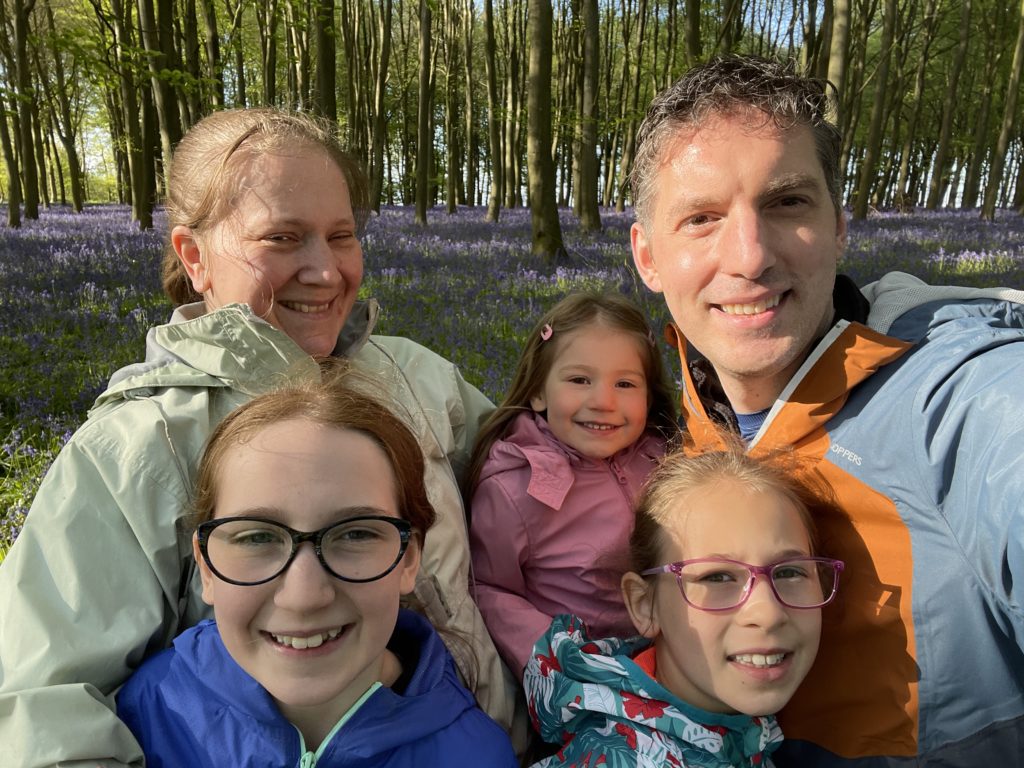
Paul Walker and his family joined us in 2021. Paul was officially inducted on 15th July 2021 as our newly appointed Vicar, during which we warmly welcomed them all. He would love to get to get to know you , so please do get in touch.
If you want to watch the induction service livestream click here.
The Dedworth War Memorial
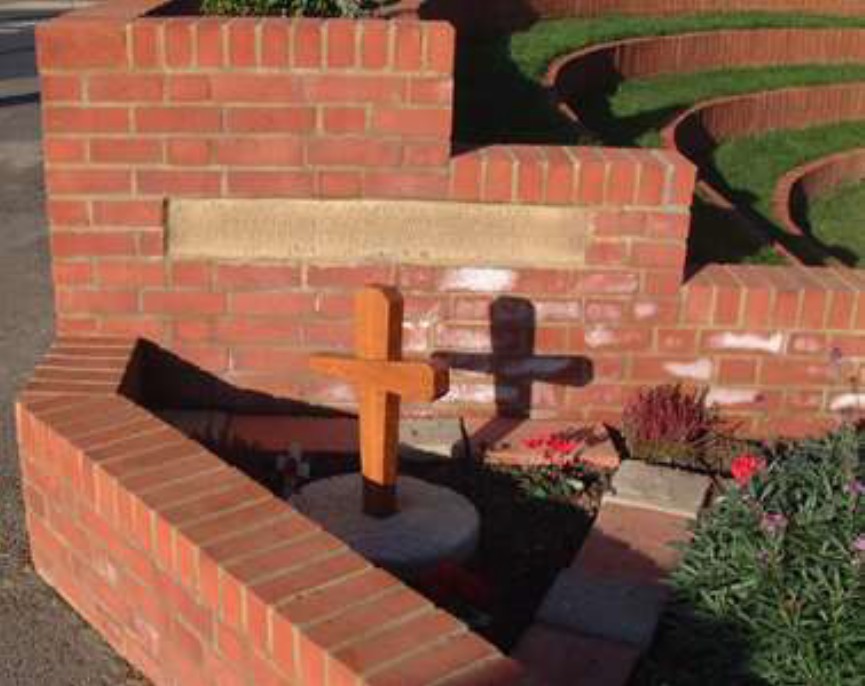
November 2004
The war memorial outside All Saints’ is actually a war shrine similar to many erected between just before the end of the Great War (1914 – 1918) until well into the 1920s. Another example is outside St. Agnes, Spital. Unlike most war memorials which bear long lists of names, this one shows just one.
The inscription reads:
TO THE GLORY OF GOD AND IN LOVING REMEMBRANCE OF
BELFORD ALEXANDER WALLIS WILSON
AND ALL WHO LAID DOWN THEIR LIVES FOR THEIR COUNTRY
1914 – 1918.
MAY THEY REST IN PEACE
Belford Alexander Wallis Wilson was born on 19 November 1874 near the Hampshire/Sussex border. He was the eldest of ten children. (Large families were common in those days.) He worked as a tea planter in Ceylon, now called Sri Lanka. Later he became a soldier and fought in both the Boer War in South Africa and the First World War. He saw action in the Dardanelles, and was wounded during the Battle of the Somme in 1916. He was awarded the Military Cross for gallantry.
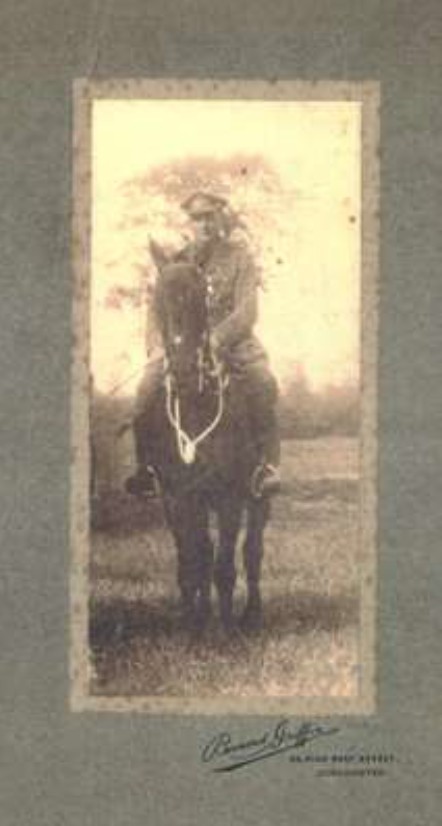
When he died on 26th September 1917 during the Third Battle of Ypres he was 42 years old and a second lieutenant. His body was never recovered so there is no known grave.
It is not clear why he is commemorated outside our church, no connection with Windsor having been established (parish records are incomplete), but it is thought that maybe one of his married sisters lived nearby and paid for this memorial to be erected in memory of this brave man.
Following his death, his commanding officer wrote:
“He was loved by all the officers and men of the battalion, as one of the oldest and bravest…. everyone knows of the brave deeds he has done.”
Wallis Wilson is also remembered in three other places:
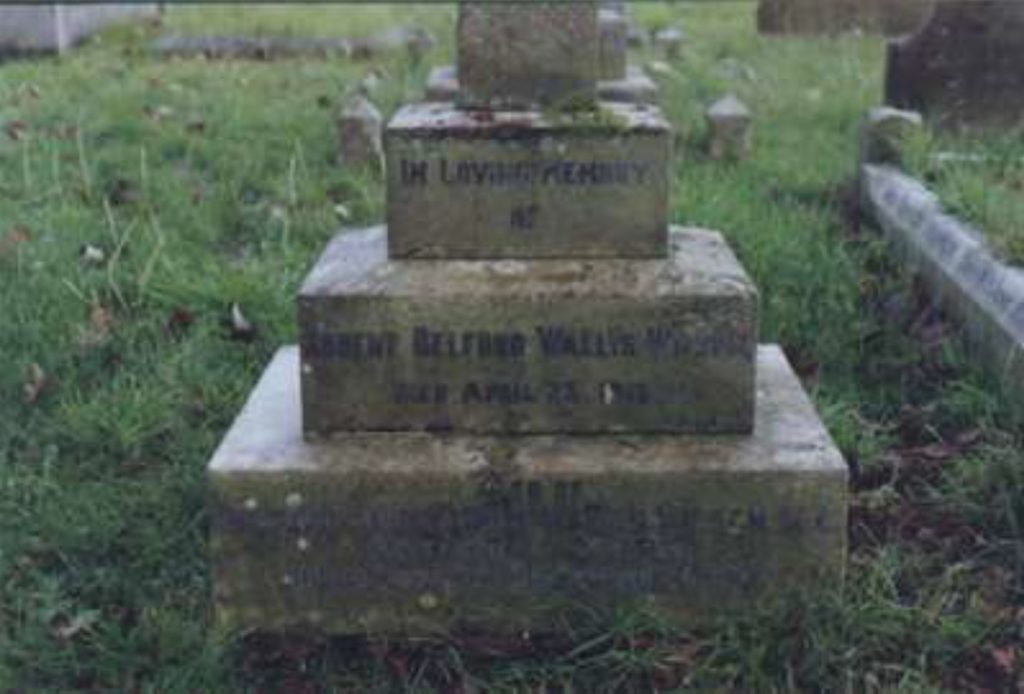
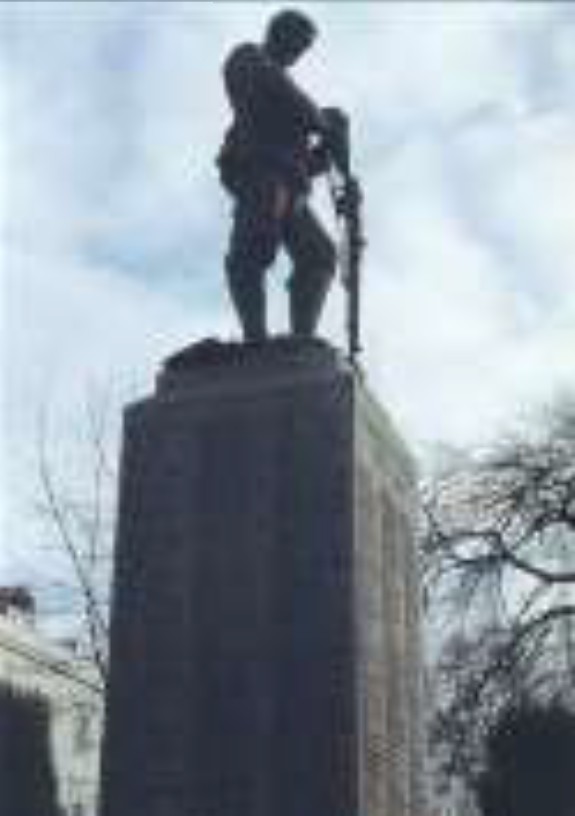

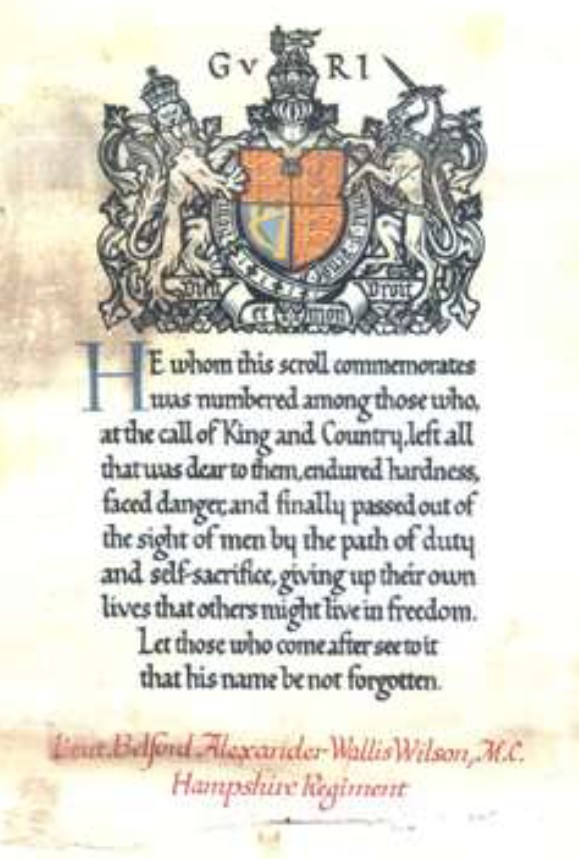
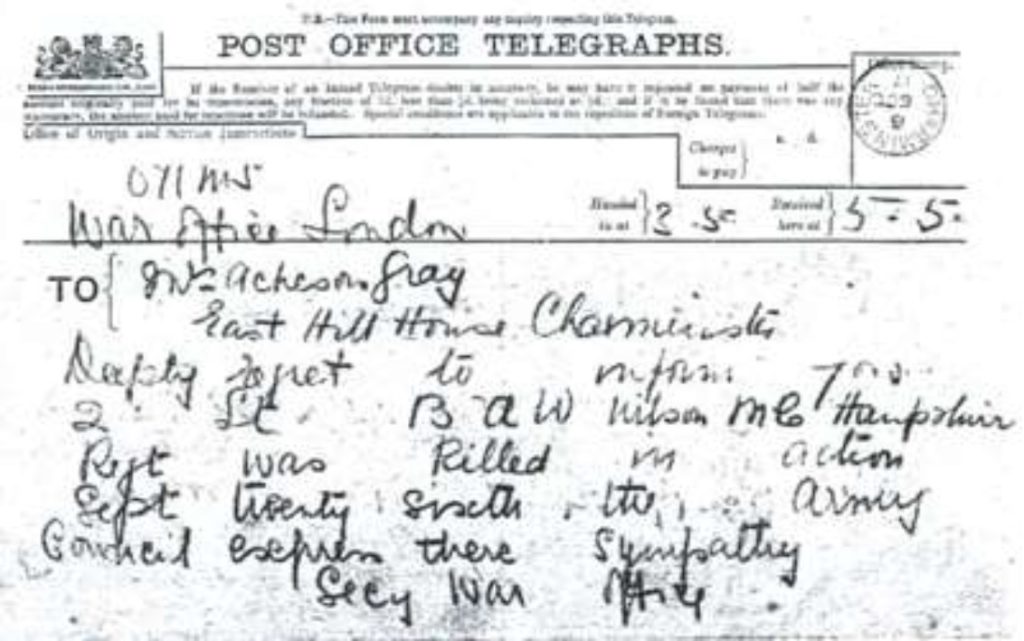
With thanks to Colin Hague
This is how the memorial looked in the 1970s and 80s when the bell was still in the tower.
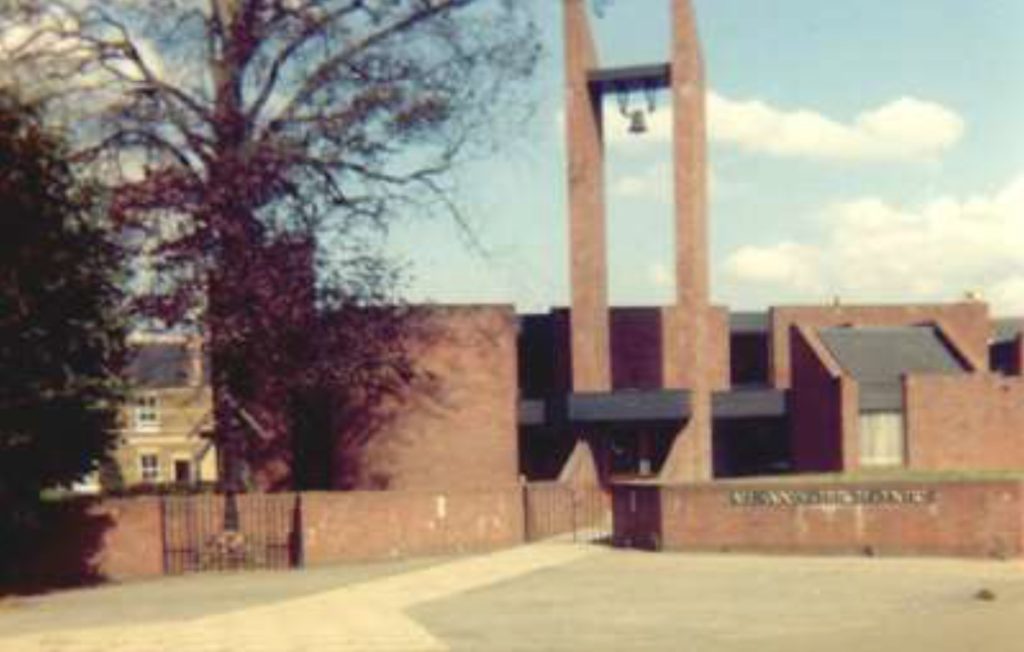
In the 1990s the war memorial looked a little different:
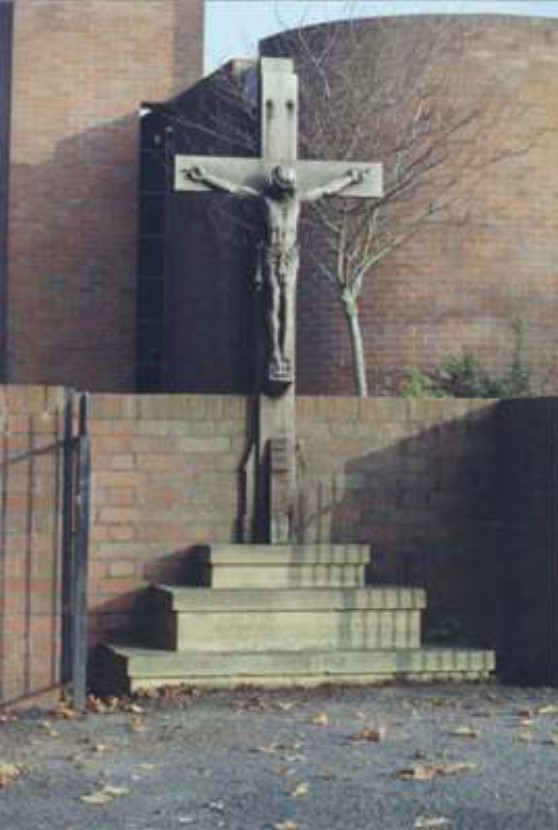
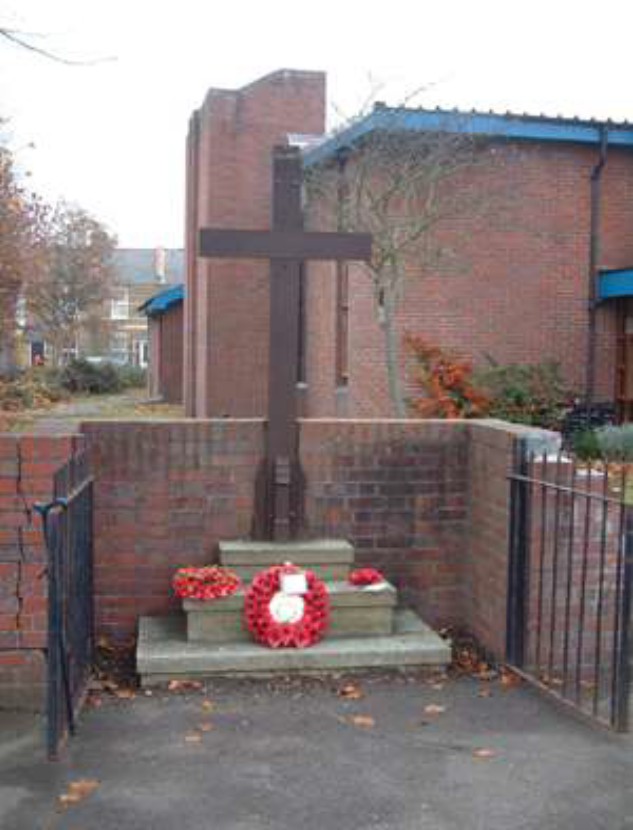
The cross used in this memorial was the original one from the Victorian church. As seen above it was originally under a small roof which gave it some protection. The oak is nevertheless very solid and hard wearing.
At some point the figure of Christ was damaged so it was removed. The cross remained for many years. The cross eventually rotted at the bottom. It was the wood from the original cross which was used by Bob Woodcock to carve the small cross in the Memorial garden now. Bob had been a stalwart member of the church nearly all his life from the early days when he sang in the choir, through the years he played the organ.
See Below for links to other related pages:
